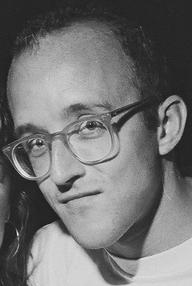
キース・へリング
Keith Haring, 1958-1990

☆
キース・アレン・ヘリング(Keith Allen Haring、1958年5月4日 -
1990年2月16日)は、1980年代のニューヨークのグラフィティ・サブカルチャーからポップ・アートを生み出したアメリカのアーティストである
[1]。
[ギャラリーの個展に加え、カッセルのドクメンタ、ニューヨークのホイットニー・ビエンナーレ、サンパウロ・ビエンナーレ、ヴェネチア・ビエンナーレなど
国内外の有名なグループ展に参加した。1997年にはホイットニー美術館で回顧展が開催された。
1982年から1989年にかけて50以上のパブリック・アートを制作し、その多くは病院、デイケアセンター、学校などのために自発的に制作された。
1986年には、作品の延長としてポップ・ショップをオープンした。その後の彼の作品は、しばしば政治的、社会的なテーマ——反クラック、反アパルトヘイ
ト、安全なセックス、同性愛、エイズ——を
彼自身の図像を通して伝えている[5]。
ヘリングは1990年2月16日にエイズ関連の合併症で死去した[6]。2014年、彼はサンフランシスコのレインボー・オナー・ウォーク(「各分野で多
大な貢献をした」LGBTQの人々を記す名声の散歩道)の初代受賞者の一人となった。2019年には、ニューヨークのストーンウォール・インにあるストー
ンウォール国民記念碑内の「国民LGBTQ名誉の壁」に選出された50人のアメリカ人「先駆者、先駆者、英雄」の一人となった。
| Keith
Allen Haring (May 4, 1958 – February 16, 1990) was an American
artist
whose pop art emerged from the New York City graffiti subculture of the
1980s.[1] His animated imagery has "become a widely recognized visual
language".[2] Much of his work includes sexual allusions that turned
into social activism by using the images to advocate for safe sex and
AIDS awareness.[3] In addition to solo gallery exhibitions, he
participated in renowned national and international group shows such as
documenta in Kassel, the Whitney Biennial in New York, the São Paulo
Biennial, and the Venice Biennale. The Whitney Museum held a
retrospective of his art in 1997. Haring's popularity grew from his spontaneous drawings in New York City subways—chalk outlines of figures, dogs, and other stylized images on blank black advertising spaces.[4] After gaining public recognition, he created colorful larger scale murals, many commissioned.[4] He produced more than 50 public artworks between 1982 and 1989, many of them created voluntarily for hospitals, day care centers and schools. In 1986, he opened the Pop Shop as an extension of his work. His later work often conveyed political and societal themes—anti-crack, anti-apartheid, safe sex, homosexuality and AIDS—through his own iconography.[5] Haring died of AIDS-related complications on February 16, 1990.[6] In 2014, he was one of the inaugural honorees in the Rainbow Honor Walk in San Francisco, a walk of fame noting LGBTQ people who have "made significant contributions in their fields". In 2019, he was one of the inaugural 50 American "pioneers, trailblazers, and heroes" inducted on the National LGBTQ Wall of Honor within the Stonewall National Monument in New York City's Stonewall Inn. |
キース・アレン・ヘリング(Keith Allen
Haring、1958年5月4日 -
1990年2月16日)は、1980年代のニューヨークのグラフィティ・サブカルチャーからポップ・アートを生み出したアメリカのアーティストである
[1]。
[ギャラリーの個展に加え、カッセルのドクメンタ、ニューヨークのホイットニー・ビエンナーレ、サンパウロ・ビエンナーレ、ヴェネチア・ビエンナーレなど
国内外の有名なグループ展に参加した。1997年にはホイットニー美術館で回顧展が開催された。 1982年から1989年にかけて50以上のパブリック・アートを制作し、その多くは病院、デイケアセンター、学校などのために自発的に制作された。 1986年には、作品の延長としてポップ・ショップをオープンした。その後の彼の作品は、しばしば政治的、社会的なテーマ-反クラック、反アパルトヘイ ト、安全なセックス、同性愛、エイズ-を彼自身の図像を通して伝えている[5]。 ヘリングは1990年2月16日にエイズ関連の合併症で死去した[6]。2014年、彼はサンフランシスコのレインボー・オナー・ウォーク(「各分野で多 大な貢献をした」LGBTQの人々を記す名声の散歩道)の初代受賞者の一人となった。2019年には、ニューヨークのストーンウォール・インにあるストー ンウォール国民記念碑内の「国民LGBTQ名誉の壁」に選出された50人のアメリカ人「先駆者、先駆者、英雄」の一人となった。 |
| Biography Early life and education: 1958–1979 Haring was born in Reading, Pennsylvania, on May 4, 1958.[7] He was raised in Kutztown, Pennsylvania, by his mother, Joan Haring, and father, Allen Haring, an engineer and amateur cartoonist. He had three younger sisters, Kay, Karen and Kristen.[8] He became interested in art at a very young age, spending time with his father producing creative drawings.[9] His early influences included Walt Disney cartoons, Dr. Seuss, Charles Schulz, and the Looney Tunes characters in The Bugs Bunny Show.[9] Haring's family attended the United Church of Christ.[10] In his early teenage years, he was involved with the Jesus movement.[11] He later hitchhiked across the country, selling T-shirts he made featuring the Grateful Dead and anti-Nixon designs.[12] He graduated from Kutztown Area High School in 1976.[13] He studied commercial art from 1976 to 1978 at Pittsburgh's Ivy School of Professional Art, but eventually lost interest,[14] inspired to focus on his own art after reading The Art Spirit (1923) by Robert Henri.[9] Haring had a maintenance job at the Pittsburgh Arts and Crafts Center and was able to explore the art of Jean Dubuffet, Jackson Pollock, and Mark Tobey. He was highly influenced around this time by a 1977 retrospective of Pierre Alechinsky's work and by a lecture that the sculptor Christo gave in 1978. From Alechinsky's work, he felt encouraged to create large images that featured writing and characters. From Christo, Haring was introduced to ways of incorporating the public into his art. His first significant exhibition was in Pittsburgh Arts and Crafts Center in 1978.[15][16] Haring moved to the Lower East Side of New York in 1978 to study painting at the School of Visual Arts. He also worked as a busboy during this time at the nightclub Danceteria.[17] While attending school he studied semiotics with Bill Beckley and experimented with video and performance art. Haring was also highly influenced in his art by author William Burroughs.[9] In 1978, Haring wrote in his journal: "I am becoming much more aware of movement. The importance of movement is intensified when a painting becomes a performance. The performance (the act of painting) becomes as important as the resulting painting."[18] In December 2007, an area of the American Textile Building in the TriBeCa neighborhood of New York City was discovered to have a Haring painting from 1979.[19] |
履歴 生い立ちと教育 1958-1979 ヘリングは1958年5月4日、ペンシルバニア州レディングで生まれた[7]。母ジョーン・ヘリングと、エンジニアでアマチュア漫画家の父アレン・ヘリン グのもと、ペンシルバニア州カッツタウンで育った。幼い頃からアートに興味を持ち、父親と一緒に創造的なドローイングを描いていた[9] 。 その後、ヒッチハイクで全米を渡り歩き、グレイトフル・デッドや反ニクソンのデザインのTシャツを売る。 [1976年から1978年にかけて、ピッツバーグのアイビー・スクール・オブ・プロフェッショナル・アートで商業美術を学んだが、やがて興味を失い [14]、ロベール・アンリの『アート・スピリット』(1923年)を読んで、自分のアートに集中するようになった[9]。 ピッツバーグ・アーツ・アンド・クラフツ・センターでメンテナンスの仕事をしていたヘリングは、ジャン・デュビュッフェ、ジャクソン・ポロック、マーク・ トビーのアートを探求することができた。この頃、彼は1977年に開催されたピエール・アレチンスキーの回顧展と、1978年に彫刻家クリストが行った講 演会に強い影響を受けた。アレチンスキーの作品から、彼は文字や文章をモチーフにした大きなイメージを制作するよう促された。クリストから、ヘリングは大 衆を自分のアートに取り込む方法を教わった。彼の最初の重要な展覧会は、1978年にピッツバーグ・アーツ・アンド・クラフツ・センターで開催された [15][16]。 1978年、ヘリングはニューヨークのロウアー・イースト・サイドに移り住み、スクール・オブ・ビジュアル・アーツで絵画を学ぶ。学校に通いながら、ビ ル・ベックリーに記号論を学び、ビデオやパフォーマンス・アートの実験も行った。ヘリングはまた、作家ウィリアム・バロウズの影響を強く受けていた [9]。 1978年、ヘリングは日記にこう書いている: 「私は動きをより意識するようになった。絵画がパフォーマティビティになるとき、動きの重要性はさらに増す。パフォーマンス(絵を描く行為)は、結果とし て描かれる絵と同じくらい重要になる」[18]。 2007年12月、ニューヨークのTriBeCa地区にあるアメリカン・テキスタイル・ビルの一角に、1979年に描かれたヘリングの絵があることが発見 された[19]。 |
| Early work: 1980–1981 Haring first received public attention with his graffiti art in subways, where he created white chalk drawings on black, unused advertisement backboards in the stations.[20] He considered the subways to be his "laboratory," a place where he could experiment and create his artwork and saw the black advertisement paper as a free space and "the perfect place to draw".[21] The Radiant Baby, a crawling infant with emitting rays of light, became his most recognized symbol. He used it as his tag to sign his work while a subway artist.[11] Symbols and images (such as barking dogs, flying saucers, and large hearts) became common in his work and iconography. As a result, Haring's works spread quickly and he became increasingly more recognizable. The cut-up technique in the writings of William S. Burroughs and Brion Gysin inspired Haring's work with lettering and words.[12] In 1980, he created headlines from word juxtaposition and attached hundreds to lamp-posts around Manhattan. These included phrases like "Reagan Slain by Hero Cop" and "Pope Killed for Freed Hostage".[22] That same year, as part of his participating in The Times Square Show with one of his earliest public projects, Haring altered a banner advertisement above a subway entrance in Times Square that showed a female embracing a male's legs, blacking-out the first letter so that it essentially read "hardón" instead of "Chardón," a French clothing brand.[23] He later used other forms of commercial material to spread his work and messages. This included mass-producing buttons and magnets to hand out and working on top of subway ads. In 1980, Haring began organizing exhibitions at Club 57, which were filmed by his close friend, photographer Tseng Kwong Chi.[24] In February 1981, Haring had his first solo exhibition at Westbeth Painters Space in the West Village.[25][26] In November 1981, Hal Bromm Gallery in Tribeca presented the artist's first solo exhibition at a commercial gallery.[27] |
初期の作品: 1980-1981 ヘリングが最初に世間の注目を浴びたのは地下鉄でのグラフィティ・アートで、駅構内の黒い未使用の広告バックボードに白いチョークでドローイングを描いた [20]。彼は地下鉄を自分の「実験室」であり、実験や作品制作ができる場所と考え、黒い広告用紙を自由な空間、「絵を描くのに最適な場所」と考えた [21]。吠える犬、空飛ぶ円盤、大きなハートなどのシンボルやイメージは、彼の作品や図像によく見られるようになった。その結果、ヘリングの作品は瞬く 間に広まり、彼はますます認知されるようになった。 ウィリアム・S・バロウズやブリオン・ガイシンの著作にあるカット・アップの技法は、レタリングや言葉を使ったヘリングの作品にインスピレーションを与え た[12] 1980年、彼は言葉の並置から見出しを作り、マンハッタン中の街灯に何百も貼り付けた。同年、タイムズ・スクエア・ショーに参加する一環として、ヘリン グはタイムズ・スクエアの地下鉄の入り口の上にある、女性が男性の脚を抱きしめているバナー広告を変更し、最初の文字をブラックアウトして、実質的にフラ ンスの衣料品ブランドである「シャルドン」ではなく「ハードン」と読めるようにした。これには、ボタンやマグネットを大量生産して配ったり、地下鉄の広告 の上で活動したりすることも含まれる。 1981年2月、ヘリングはウェスト・ヴィレッジのウェストベス・ペインターズ・スペースで初の個展を開催した[25][26]。1981年11月、トラ イベッカのハル・ブロム・ギャラリーは、商業ギャラリーで初の個展を開催した[27]。 |
Breakthrough and rise to fame:
1982–1986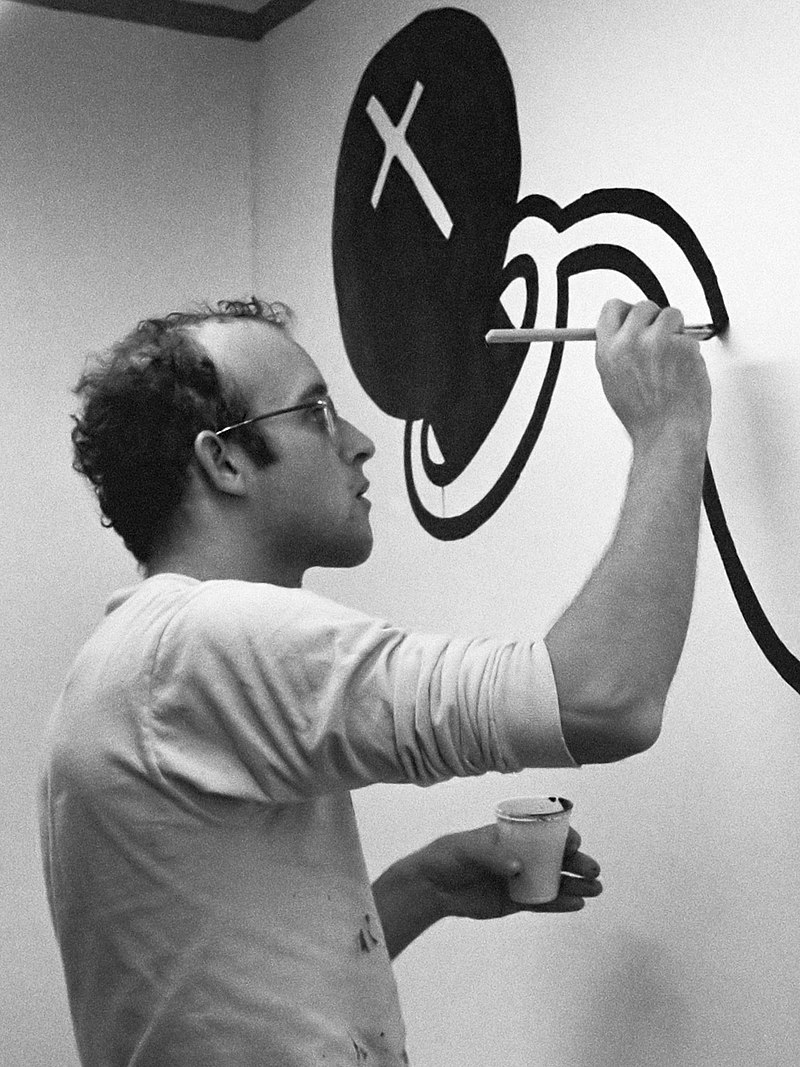 Haring painting a mural at the Stedelijk Museum in Amsterdam, Netherlands, 1986 In January 1982, Haring was the first of twelve artists organized by Public Art Fund to display work on the computer-animated Spectacolor billboard in Times Square.[28] That summer, Haring created his first major outdoor mural on the Houston Bowery Wall on the Lower East Side.[29] In his paintings, he often used lines to show energy and movement.[30] Haring would often work quickly, trying to create as much work as possible—sometimes completing as many as 40 paintings in a day.[18] One of his works, Untitled (1982), depicts two figures with a radiant heart-love motif, which critics have interpreted as a bold nod to homosexual love and a significant cultural statement.[30] In 1982, Haring participated in documenta 7 in Kassel, where his works were exhibited alongside Joseph Beuys, Anselm Kiefer, Gerhard Richter, Cy Twombly, Jean-Michel Basquiat and Andy Warhol.[31] In October 1982, he had an exhibition at the Tony Shafrazi Gallery with his collaborator graffiti artist Angel "LA II" Ortiz.[32] That year, he was in several group exhibitions including Fast at the Alexander Milliken Gallery in New York.[33] Haring designed the poster for the 1983 Montreux Jazz Festival in Switzerland.[34] In February 1983, Haring had a solo exhibition at the Fun Gallery in the East Village, Manhattan.[35] That year, Haring participated in the São Paulo Biennale in Brazil and the Whitney Biennial in New York.[36][37] In April 1983, Haring was commissioned to paint a mural, Construction Fence, at the construction site of the Haggerty Museum of Art in Milwaukee.[38] Later that year, Haring took part in the exhibition Urban Pulses: the Artist and the City in Pittsburgh by spray painting a room at the Pittsburgh Center for the Arts and creating an outdoor mural at PPG Place.[39] In October 1983, Elio Fiorucci invited Haring to Milan to paint the walls of his Fiorucci store.[40] While Haring was in London for the opening of his exhibition at the Robert Fraser Gallery in October 1983, he met and began collaborating with choreographer Bill T. Jones. Haring used Jones' body as the canvas to paint from head to toe.[41] Haring and Angel "LA II" Ortiz produced a T-shirt design for friends Willi Smith and Laurie Mallet's clothing label WilliWear Productions in 1984.[42] After Haring was profiled in Paper magazine, fashion designer Vivienne Westwood reached out to editor-in-chief Kim Hastreiter to facilitate a meeting with Haring. Haring presented Westwood with two large sheets of drawings and she turned them into textiles for her Autumn/Winter 1983–84 Witches collection.[43] Haring's friend Madonna wore a skirt from the collection, most notably in the music video her 1984 single "Borderline."[44] As Haring rose to stardom he continued to draw in the subways, contrasting the rocketing prices for his work.[45] Haring enjoyed giving his work away for free, often handing out free buttons and posters of his work.[45] In 1984, he released a book titled Art in Transit, which featured photography by Tseng Kwong Chi and an introduction by Henry Geldzahler.[46] Haring's swift rise to international celebrity status was covered by the media. His art covered the February 1984 issue of Vanity Fair, and he was featured in the October 1984 issue of Newsweek.[47][48] In 1984, the New York City Department of Sanitation asked Haring to design a logo for their anti-litter campaign.[49] Haring participated in the Venice Biennale.[36] He was invited to create temporary murals at the National Gallery of Victoria and the Art Gallery of New South Wales.[50] During his visit to Australia, he painted the permanent Keith Haring Mural at Collingwood Technical College in Melbourne.[51] That year, Haring also painted murals at the Walker Art Center in Minneapolis and in Rio de Janeiro.[52] Later that year, he designed the stage set for the production of Bill T. Jones and Arnie Zane's Secret Pastures at the Brooklyn Academy of Music.[53] Haring was commissioned by the United Nations to create a first day cover of the United Nations stamp and an accompanying limited edition lithograph to commemorate 1985 as International Youth Year.[54] He designed MTV set decorations and painted murals for various art institutions and nightclubs, such as the Palladium in Manhattan.[11] In March 1985, Haring painted the walls of the Grande Halle de la Villette for the Biennale de Paris.[55] In July 1985, he made a painting for the Live Aid concert at J.F.K. Stadium in Philadelphia.[56] Additionally, he painted a car owned by art dealer Max Protetch to be auctioned with proceeds donated to African famine relief.[57] Haring continued to be politically active as well by designing Free South Africa posters in 1985,[58] and creating a poster for the 1986 Great Peace March for Global Nuclear Disarmament.[59] 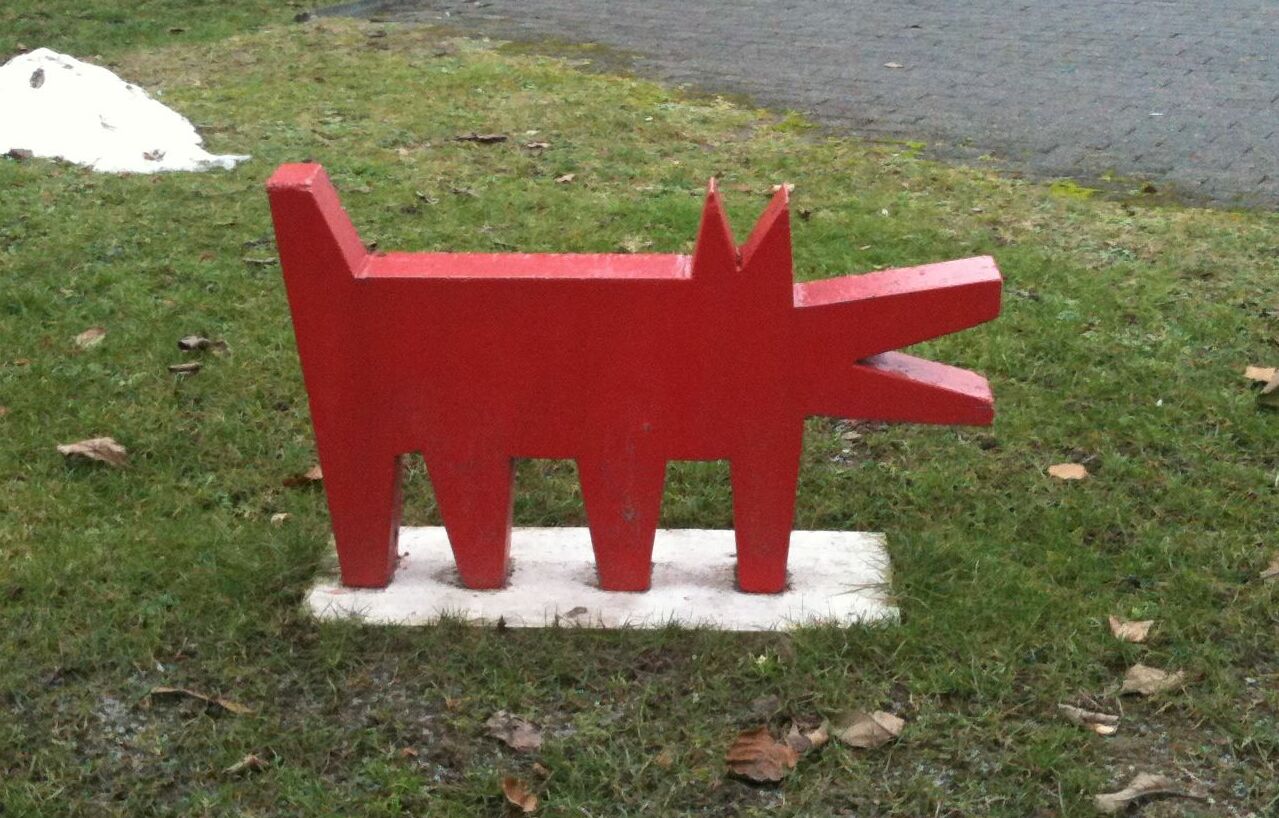 A simple statue of a red dog Barking dog sculpture by Haring in Dortmund, Germany In the spring of 1986, Haring had a solo museum exhibition at the Stedelijk Museum in Amsterdam, and he painted a mural.[60] In 1986, Haring also created public murals in the lobby and ambulatory care department of Woodhull Medical and Mental Health Center on Flushing Avenue in Brooklyn.[61] In June 1986, Haring created a 90-foot (27-metre) banner, CityKids Speak on Liberty, in conjunction with The CityKids Foundation to commemorate the centennial anniversary of the Statue of Liberty's arrival in the United States.[62] Later that month, he created his Crack Is Wack mural in East Harlem, visible from New York's FDR Drive.[14] It was originally considered as vandalism by the New York Police Department and Haring was arrested. But after local media outlets picked up the story, Haring was released on a lesser charge. While in jail, Haring's original work was vandalized. This mural is an example of Haring's use of consciousness raising rather than consumerism, "Crack is Wack" rather than "Coke is it."[63] He painted an updated version of the mural on the same wall in October 1986.[64] On October 23, 1986, Haring created a mural on the Berlin Wall for the Checkpoint Charlie Museum.[65] The mural was 300 meters (980 ft) long and depicted red and black interlocking human figures against a yellow background. The colors were a representation of the German flag and symbolized the hope of unity between East and West Germany.[66] Haring began collaborating with Grace Jones, whom he had met through Andy Warhol, for an Interview magazine shoot in 1984.[67] Haring painted a skirt for Jones to wear in her music video "I'm Not Perfect (But I'm Perfect for You)" (1986) and he was the assistant director for the video.[68][69] He also body painted Jones for live performances at the Paradise Garage,[70] and for her role of Katrina the Queen of The Vampires in the 1986 film Vamp.[71] Haring collaborated with David Spada, a jewelry designer, to design the sculptural adornments for Jones.[72] Haring also illustrated vinyl covers for various artists such as David Bowie's "Without You" (1983), N.Y.C. Peech Boys' Life Is Something Special (1983), Malcolm McLaren's "Duck For The Oyster" (1983), and Sylvester's "Someone Like You" (1986).[73] Haring collaborated with Warhol to design the poster for the 1986 Montreux Jazz Festival in Switzerland.[74] The poster was also used for the 1986 Montreux-Detroit Jazz Festival in Detroit.[74] |
ブレイクと名声への上昇:1982-1986年 オランダ、アムステルダムのステデライク美術館で壁画を描くヘリング(1986年) 1982年1月、ヘリングはパブリック・アート・ファンドによって組織された12組のアーティストの第1号として、タイムズ・スクエアのコンピューター・ アニメーションの看板に作品を展示した[28]。同年夏、ヘリングはロウアー・イースト・サイドのヒューストン・バワリー・ウォールに初の大規模な屋外壁 画を制作した[29]。 [彼の作品のひとつである「無題」(1982年)は、晴れやかなハートの愛のモチーフを持つ二人の人物を描いており、批評家たちはこれを同性愛の愛に対す る大胆なうなずきであり、重要な文化的声明であると解釈している[30]。 1982年、ヘリングはカッセルで開催されたドクメンタ7に参加し、彼の作品はヨーゼフ・ボイス、アンゼルム・キーファー、ゲルハルト・リヒター、サイ・ トゥオンブリー、ジャン=ミシェル・バスキア、アンディ・ウォーホルらと共に展示された。 [32]同年、ニューヨークのアレキサンダー・ミリケン・ギャラリーでの「Fast」を含むいくつかのグループ展に参加した[33]。1983年、ヘリン グはスイスのモントルー・ジャズ・フェスティバルのポスターをデザインした[34]。 1983年2月、マンハッタンのイースト・ヴィレッジにあるファン・ギャラリーで個展を開催[35]。同年、ブラジルのサンパウロ・ビエンナーレとニュー ヨークのホイットニー・ビエンナーレに参加[36][37]。1983年4月、ミルウォーキーのハガティ美術館の建設現場に壁画『コンストラクション・ フェンス』を描くよう依頼される。 [1983年10月、エリオ・フィオルッチはヘリングをミラノに招き、フィオルッチの店舗の壁をペイントさせた[40]。1983年10月、ロバート・フ レイザー・ギャラリーでの展覧会のオープニングのためにロンドンを訪れていたヘリングは、振付家のビル・T・ジョーンズと出会い、コラボレーションを始め る。ヘリングはジョーンズの身体をキャンバスにして、頭からつま先まで絵を描いた[41]。 1984年、ヘリングとエンジェル・「LA II」・オルティスは、友人であるウィリー・スミスとローリー・マレットの衣料品レーベルWilliWear ProductionsのためにTシャツのデザインを制作した[42]。ヘリングが『ペーパー』誌で紹介された後、ファッションデザイナーのヴィヴィア ン・ウエストウッドは、ヘリングとの面会を促進するために編集長のキム・ハストレイターに連絡を取った。ヘリングはウェストウッドに2枚の大きなドローイ ングを渡し、彼女はそれをテキスタイルにして1983-84年秋冬コレクション「Witches」を発表した[43]。ヘリングの友人であるマドンナはこ のコレクションのスカートを着用し、特に1984年のシングル「Borderline」のミュージックビデオに登場した[44]。 ヘリングがスターダムにのし上がるにつれて、彼は地下鉄で絵を描き続け、作品の値段が高騰していくのとは対照的であった[45]。ヘリングは自分の作品を 無料で配ることを楽しみ、しばしば自分の作品のボタンやポスターを無料で配っていた[45]。1984年、彼はツェン・クォン・チの写真とヘンリー・ゲル ドザーラーの紹介を掲載した『Art in Transit』という本を発表した[46]。彼のアートは『ヴァニティ・フェア』誌の1984年2月号を飾り、『ニューズウィーク』誌の1984年10 月号で特集された[47][48]。 1984年、ニューヨーク市衛生局はヘリングにポイ捨て防止キャンペーンのロゴデザインを依頼した[49]。 [同年、ミネアポリスのウォーカー・アート・センターとリオデジャネイロにも壁画を描いた[52]。同年末、ブルックリン・アカデミー・オブ・ミュージッ クでビル・T・ジョーンズとアーニー・ゼインの『Secret Pastures』の舞台装置をデザインした[53]。 1985年が国際青少年年であることを記念して、国連から国連切手の初日カバーとそれに付随する限定版リトグラフの制作を依頼された[54]。1985年 3月には、パリ・ビエンナーレのためにグランド・ハレ・ド・ラ・ヴィレットの壁を描いた[11]。 [1985年7月には、フィラデルフィアのJ.F.K.スタジアムで開催されたライブ・エイド・コンサートのために絵を描いた[56]。さらに、美術商の マックス・プロテッチが所有する車を描き、その収益をアフリカの飢餓救済に寄付するためにオークションにかけた[57]。  シンプルな赤犬の像 ドイツ、ドルトムントにあるヘリングによる吠える犬の彫刻 1986年春、ヘリングはアムステルダムのステデライク美術館で個展を開催し、壁画を描いた[60]。1986年、ヘリングはブルックリンのフラッシン グ・アヴェニューにあるウッドハル医療精神衛生センターのロビーと外来診療部門にも公共の壁画を制作した[61]。 1986年6月、ヘリングは自由の女神のアメリカ到着100周年を記念して、シティキッズ財団と共同で90フィート(約27メートル)の横断幕「シティ キッズ・スピーク・オン・リバティ」を制作した[62]。しかし、地元メディアがこの話を取り上げた後、ヘリングは軽い罪状で釈放された。刑務所にいる間 に、ヘリングのオリジナル作品は破壊された。この壁画は、ヘリングが消費主義ではなく意識改革を用いた例であり、「コーク・イズ・イット」ではなく「ク ラック・イズ・ワック」である[63]。彼は1986年10月、同じ壁にこの壁画の最新版を描いた[64]。 1986年10月23日、ヘリングはチェックポイント・チャーリー博物館のためにベルリンの壁に壁画を制作した[65]。壁画の長さは300メートル (980フィート)で、黄色を背景に赤と黒の連動した人影が描かれていた。この色はドイツ国旗を表現したもので、東西ドイツの統一という希望を象徴してい た[66]。 ヘリングは1984年、アンディ・ウォーホルを通じて知り合ったグレース・ジョーンズと『インタビュー』誌の撮影のためにコラボレーションを始めた [67]。ヘリングはジョーンズが彼女のミュージック・ビデオ『I'm Not Perfect (But I'm Perfect for You)』(1986年)で着用するスカートを描き、彼はそのビデオのアシスタント・ディレクターを務めた。 [68][69]彼はまた、パラダイス・ガレージでのライブ・パフォーマンスのためにジョーンズをボディペインティングし[70]、1986年の映画 『ヴァンプ』ではヴァンパイアの女王カトリーナ役を演じた[71]。 ヘリングはまた、デヴィッド・ボウイの「Without You」(1983年)、N.Y.C.ピーチ・ボーイズの「Life Is Something Special」(1983年)、マルコム・マクラーレンの「Duck For The Oyster」(1983年)、シルヴェスターの「Someone Like You」(1986年)など、様々なアーティストのビニール・ジャケットのイラストを描いた[73]。 ヘリングはウォーホルと共同で1986年にスイスで開催されたモントルー・ジャズ・フェスティバルのポスターをデザインした[74]。このポスターは 1986年にデトロイトで開催されたモントルー・デトロイト・ジャズ・フェスティバルでも使用された[74]。 |
| Pop Shop: 1986 Main article: Pop Shop 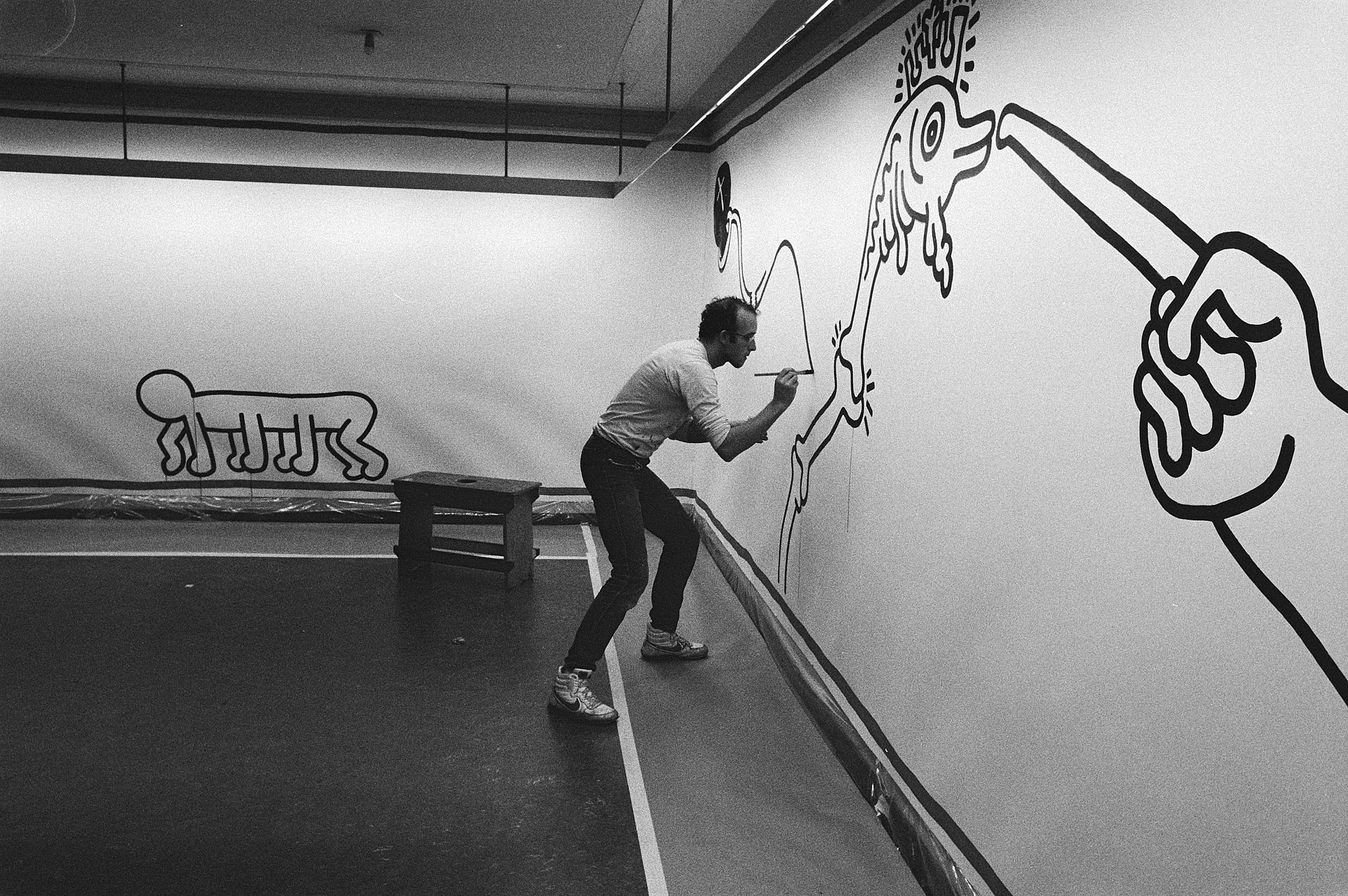 Haring painting a mural at the Stedelijk Museum in Amsterdam, Netherlands, 1986 In April 1986, Pop Shop opened in Soho, selling shirts, posters, and other items showing Haring's work.[75] This made Haring's work readily accessible to purchase at reasonable prices.[6] Having achieved what he wanted, which was "getting the work out to the public at large," Haring completely stopped drawing in the subways.[76] He also stopped because people were taking the subway drawings and selling them.[76] Some criticized Haring for commercializing his work.[77][5] Asked about this, Haring said, "I could earn more money if I just painted a few things and jacked up the price. My shop is an extension of what I was doing in the subway stations, breaking down the barriers between high and low art."[6] The Pop Shop remained open after Haring's death until 2005, with profits benefiting the Keith Haring Foundation.[75] The Pop Shop was not Haring's only effort to make his work widely accessible. Throughout his career, Haring made art in subways and on billboards.[6] His attempts to make his work relatable can also be seen in his figures' lack of discernable ages, races, or identities.[11] By the arrival of Pop Shop, his work had begun reflecting more socio-political themes, such as anti-Apartheid, AIDS awareness, and the crack cocaine epidemic.[5] |
ポップショップ 1986 主な記事 ポップ・ショップ  オランダ、アムステルダムのステデライク美術館で壁画を描くヘリング(1986年) 1986年4月、ポップ・ショップがソーホーにオープンし、ヘリングの作品を紹介するシャツやポスターなどを販売した[75]。 これにより、ヘリングの作品はリーズナブルな価格で購入することができるようになった[6]。 作品を広く一般に知ってもらう」という彼の望みを達成したヘリングは、地下鉄で絵を描くことを完全に止めた[76]。 このことについて尋ねられたヘリングは、「少し描いて値段を高くすれば、もっとお金を稼ぐことができる。私のショップは、私が地下鉄の駅でやっていたこと の延長であり、ハイ・アートとロー・アートの垣根を取り払ったものだ」[6] ポップ・ショップは、ヘリングの死後も2005年までオープンし続け、利益はキース・ヘリング財団に寄付された[75]。 ポップ・ショップは、ヘリングの作品を広く親しみやすくするための唯一の取り組みではなかった。彼のキャリアを通して、ヘリングは地下鉄やビルボードで アートを制作していた[6]。彼の作品を親しみやすいものにしようとする試みは、年齢、人種、アイデンティティがはっきりしない人物像にも見られる [11]。ポップ・ショップの登場までに、彼の作品は反アパルトヘイト、エイズへの認識、クラック・コカインの蔓延といった、より社会政治的なテーマを反 映し始めていた[5]。 |
| Final years and death: 1987–1990 From 1982 to 1989, Haring was featured in more than 100 solo and group exhibitions and produced more than 50 public artworks in dozens of charities, hospitals, day care centers, and orphanages.[78] Haring was openly gay and used his work to advocate for safe sex.[79] He was diagnosed with HIV in 1987 and AIDS in the autumn of 1988.[80][81] He used his imagery during the last years of his life to speak about his illness and to generate activism and awareness about AIDS.[5] In 1987, Haring had exhibitions in Helsinki, Paris, and elsewhere. During his stay in Paris for the 10th anniversary exhibition of American artists at the Centre Georges Pompidou, Haring and his partner Juan Rivera painted the Tower mural on an 88-foot-high (27 m) exterior stairwell at the Necker-Enfants Malades Hospital.[82][83] While in Belgium for his exhibition at Gallery 121, Haring painted a mural at the Museum of Contemporary Art, Antwerp.[84] That same year, Haring was also invited by artist Roger Nellens to paint a mural at his Casino Knokke.[85] While working there, Haring stayed in Le Dragon, a monster-shaped guest house owned by Nellens which had been designed by artist Niki de Saint Phalle. With the consent of both the designer and the owner, Haring painted a fresco mural along an interior balcony and stairway.[86][87] Haring designed a carousel for André Heller's Luna Luna, an ephemeral amusement park in Hamburg from June to August 1987 with rides designed by renowned contemporary artists.[88][89] In August 1987, Haring painted a large mural at the Carmine Street Recreation Center's outdoor pool in the West Village.[90][91] In September 1987, he painted a temporary mural, Detroit Notes, at the Cranbrook Art Museum in Bloomfield Hills, Michigan. The work reveals a darker phase in Haring's style, which Cranbrook Art Museum Director Andrew Blauvelt speculates foreshadowed the confirmation of his AIDS diagnosis.[92] Haring designed the cover for the 1987 benefit album A Very Special Christmas and the Run-DMC single "Christmas In Hollis"; proceeds went to the Special Olympics.[54][73] The image for the A Very Special Christmas compilation album consists of a typical Haring figure holding a baby. Its "Jesus iconography" is considered unusual in modern rock holiday albums.[93] 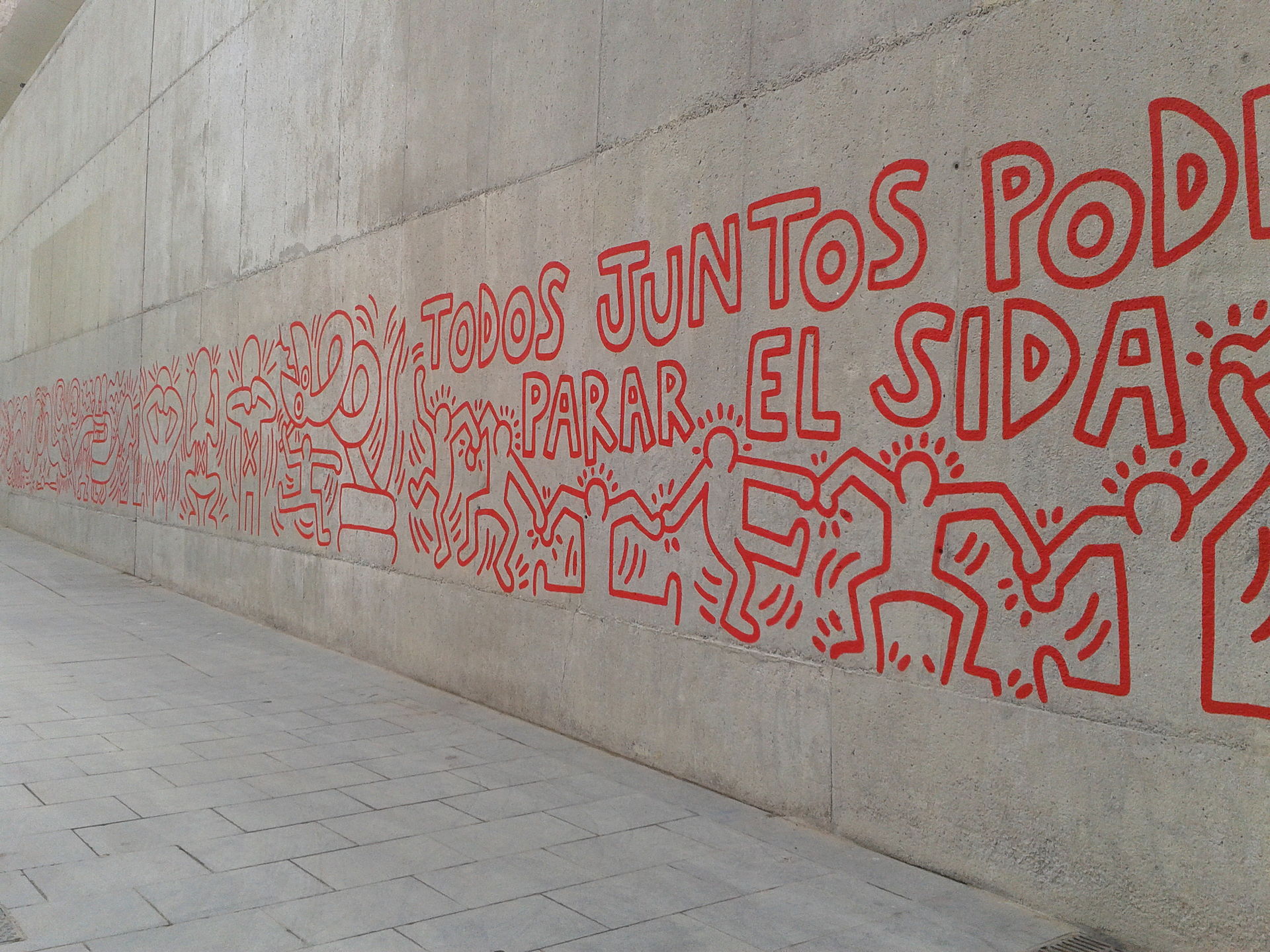 Todos Juntos Podemos Parar el SIDA (1989) mural near the Museum of Modern Arts, Barcelona, Spain Also in 1987, Haring painted a mural in the Philadelphia neighborhood of Point Breeze titled 'We the Youth' to commemorate the bicentennial of the United States Constitution. Originally intended as a placeholder, a new rowhouse was never built and the lot became a park. The mural underwent a major restoration in 2013 and is Haring's longest standing public mural at its original location.[94] In 1988, Haring joined a select group of artists whose work has appeared on the label of Chateau Mouton Rothschild wine.[95] In January 1988, he traveled to Japan to open Pop Shop Tokyo; it closed in the summer of 1988.[96] In April 1988, Haring created a mural on the South Lawn for the annual White House Easter Egg Roll, which he donated to Children's National Hospital in Washington, D.C.[97] Late in the summer, Haring traveled to Düsseldorf for a show of his paintings and sculptures at the Hans Mayer Gallery.[98] In December 1988, Haring's exhibition opened at the Tony Shafrazi Gallery, which he stated was his most important show to date. He felt he had something to prove because of his health condition and the deaths of his friends Andy Warhol and Jean-Michel Basquiat.[99] In February 1989, Haring painted the Todos Juntos Podemos Parar el SIDA mural in the Barrio Chino neighborhood of Barcelona to raise awareness of the AIDS epidemic.[100] In May 1989, at the invitation of a teacher named Irving Zucker, Haring visited Chicago to paint a 480-foot mural in Grant Park along with nearly 500 students.[101] Three other Haring murals materialized in Chicago around the same time: two at Rush University Medical Center, the other at Wells Community Academy High School.[102] The latter was completed days before Haring's arrival in Chicago, as a sort of welcome.[103] According to Zucker, Haring sent the school a design template for the mural, which was executed by a fellow teacher, Tony Abboreno, an abstract artist, and Wells High School art students, but Haring gave it his final approval and signed it himself.[103] For The Center Show, an exhibition celebrating the 20th anniversary of the Stonewall Riots, Haring was invited by the Lesbian and Gay Community Services Center in New York to create a site-specific work.[104] He chose the second-floor men's bathroom to paint his Once Upon a Time... mural in May 1989.[105] In June 1989, Haring painted his Tuttomondo mural on the rear wall of the convent of the Sant'Antonio Abate church in Pisa.[106] Haring criticized the avoidance of social issues such as AIDS through a piece called Rebel with Many Causes (1989) that revolves around a theme of "hear no evil, see no evil, speak no evil".[107] During the last week of November 1989, Haring painted a mural at the ArtCenter College of Design in Pasadena for "A Day Without Art". The mural was commemorated on December 1, the second annual AIDS Awareness Day. He commemorated the mural on December 1, World AIDS Day, and told the Los Angeles Times: "My life is my art, it's intertwined. When AIDS became a reality in terms of my life, it started becoming a subject in my paintings. The more it affected my life the more it affected my work."[5] From Pasadena, Haring flew to Atlanta for the opening of his dual show with photographer Herb Ritts at the Fay Gold Gallery on December 2.[108] In 1990, Haring painted a BMW Z1 at the Hans Mayer Gallery in Düsseldorf.[109][110] He traveled to Paris for what would be his last exhibition, Keith Haring 1983, at Galerie 1900-2000/La Galerie de Poche in January 1990.[111][112] On February 16, 1990, Haring died of AIDS-related complications at his LaGuardia Place apartment in Greenwich Village.[113][6] He was cremated and his ashes were scattered in a field near Bowers, Pennsylvania, just south of his hometown of Kutztown.[114] Three months after his death, Haring posthumously appeared in Rosa von Praunheim's documentary film Silence = Death (1990) about gay artists in New York City fighting for the rights of people with AIDS. It was released on May 4, which would have been his 32nd birthday.[115] |
晩年と死去: 1987-1990 1982年から1989年にかけて、ヘリングは100以上の個展やグループ展で紹介され、50以上のパブリック・アート作品を数十の慈善団体、病院、デイ ケアセンター、孤児院で制作した[78]。 1987年、ヘリングはヘルシンキやパリなどで展覧会を開催した。ポンピドゥー・センターで開催されたアメリカ人アーティストの10周年記念展のためにパ リに滞在していた際、ヘリングはパートナーのフアン・リヴェラとともに、ネッケル=アンファン=マラデス病院の高さ88フィート(約27メートル)の外階 段の吹き抜けにタワーの壁画を描いた[82][83]。ギャラリー121での個展のためにベルギーに滞在していた際、ヘリングはアントワープ現代美術館に 壁画を描いた[84]。 同年、ヘリングはまた、アーティスト、ロジャー・ネレンスに招かれ、彼のカジノ・クノッケで壁画を描いた[85]。そこで働いている間、ヘリングは、芸術 家ニキ・ド・サンファルが設計したネレンス所有のモンスター型のゲストハウス、ル・ドラゴンに滞在した。デザイナーとオーナーの同意を得て、ヘリングは室 内のバルコニーと階段に沿ってフレスコ画の壁画を描いた[86][87]。 1987年6月から8月にかけてハンブルグで開催されたアンドレ・ヘラーの「ルナ・ルナ」のためにメリーゴーランドをデザイン。1987年8月、ヘリング はウェスト・ヴィレッジのカーマイン・ストリート・レクリエーション・センターの屋外プールに大きな壁画を描いた[90][91]。1987年9月、ミシ ガン州ブルームフィールド・ヒルズのクランブルック美術館に一時的な壁画「デトロイト・ノート」を描いた。クランブルック美術館の館長であるアンド リュー・ブラウヴェルトは、この作品はヘリングの作風における暗い段階を明らかにしており、それは彼のエイズ診断の確定を予感させるものだったと推測して いる[92]。 ヘリングは1987年のベネフィット・アルバム『A Very Special Christmas』とランDMCのシングル「Christmas In Hollis」のジャケットをデザインし、その収益はスペシャル・オリンピックに寄付された[54][73]。その「イエスの図像」は、現代のロック・ホ リデー・アルバムでは珍しいとされている[93]。  『Todos Juntos Podemos Parar el SIDA』(1989年)スペイン、バルセロナ近代美術館近くの壁画。 また1987年、ヘリングはフィラデルフィアのポイント・ブリーズ地区に、合衆国憲法200周年を記念して「We the Youth」というタイトルの壁画を描いた。当初は場所取りのつもりだったが、新しい長屋は建てられず、その土地は公園になった。この壁画は2013年に 大規模な修復が行われ、ヘリングにとって元の場所にある公共の壁画としては最も長い歴史を持つものとなった[94]。 1988年、ヘリングはシャトー・ムートン・ロートシルトのラベルに作品が掲載されたアーティストの選抜グループに加わった[95]。1988年1月、彼 はポップショップ東京をオープンするために日本を訪れた。 夏の終わりに、ヘリングはデュッセルドルフに行き、ハンス・メイヤー・ギャラリーで絵画と彫刻の展覧会を開催した[98]。1988年12月、ヘリングの 展覧会がトニー・シャフラジ・ギャラリーで開催され、ヘリングはこれまでで最も重要な展覧会だと述べた。彼は、自身の健康状態や友人であったアンディ・ ウォーホルとジャン=ミシェル・バスキアの死により、証明すべきものがあると感じていた[99]。 1989年2月、ヘリングはバルセロナのバリオ・チノ地区にエイズの流行に対する意識を高めるために壁画「Todos Juntos Podemos Parar el SIDA」を描いた[100]。 1989年5月、アーヴィング・ザッカーという教師の招きで、ヘリングはシカゴを訪れ、約500人の生徒と共にグラント・パークに480フィートの壁画を 描いた[101]。 [後者は、ヘリングがシカゴに到着する数日前に、歓迎の意味を込めて完成させた[103]。ザッカーによると、ヘリングは学校に壁画のデザイン・テンプ レートを送り、同僚の教師で抽象画家のトニー・アボレノとウェルズ高校の美術部の生徒が制作したが、ヘリングは最終的な承認を与え、自らサインをした [103]。 ストーンウォール暴動20周年を記念した展覧会「The Center Show」のために、ヘリングはニューヨークのレズビアン・ゲイ・コミュニティ・サービス・センターからサイトスペシフィックな作品を制作するよう招待さ れた[104]。 1989年5月、ヘリングは2階の男子トイレを選び、壁画『Once Upon a Time...』を描いた[105]。 1989年6月、ヘリングはピサのサンタントニオ・アバーテ教会の修道院の裏側の壁に壁画『Tuttomondo』を描いた。 [106] 1989年11月の最終週、ヘリングはパサディナのアートセンター・カレッジ・オブ・デザインで「芸術のない一日」のために壁画を描いた。この壁画は12 月1日、2年に一度のエイズ啓発の日に記念された。彼は世界エイズデーである12月1日に壁画を記念し、ロサンゼルス・タイムズ紙にこう語った: 「私の人生は私の芸術であり、それは絡み合っている。エイズが私の人生において現実のものとなったとき、それは私の絵の主題となり始めた。1990年、ヘ リングはデュッセルドルフのハンス・マイヤー・ギャラリーでBMW Z1を描いた[109][110]。1990年1月、ギャルリー1900-2000/ラ・ギャルリー・ド・ポッシュでの最後の展覧会『Keith Haring 1983』のためにパリを訪れた[111][112]。 1990年2月16日、ヘリングはグリニッジ・ヴィレッジにあるラガーディア・プレイスのアパートでエイズ関連の合併症で亡くなった[113][6]。火 葬され、遺灰は故郷のカッツタウンから南下したペンシルヴェニア州バウアーズ近くの野原に撒かれた[114]。 死後3ヶ月後、ヘリングはローザ・フォン・プラウンハイム監督のドキュメンタリー映画『沈黙=死』(1990年)に出演し、エイズ患者の権利のために闘う ニューヨークのゲイ・アーティストを描いた。この映画は5月4日に公開されたが、この日は彼の32歳の誕生日だった[115]。 |
Friendships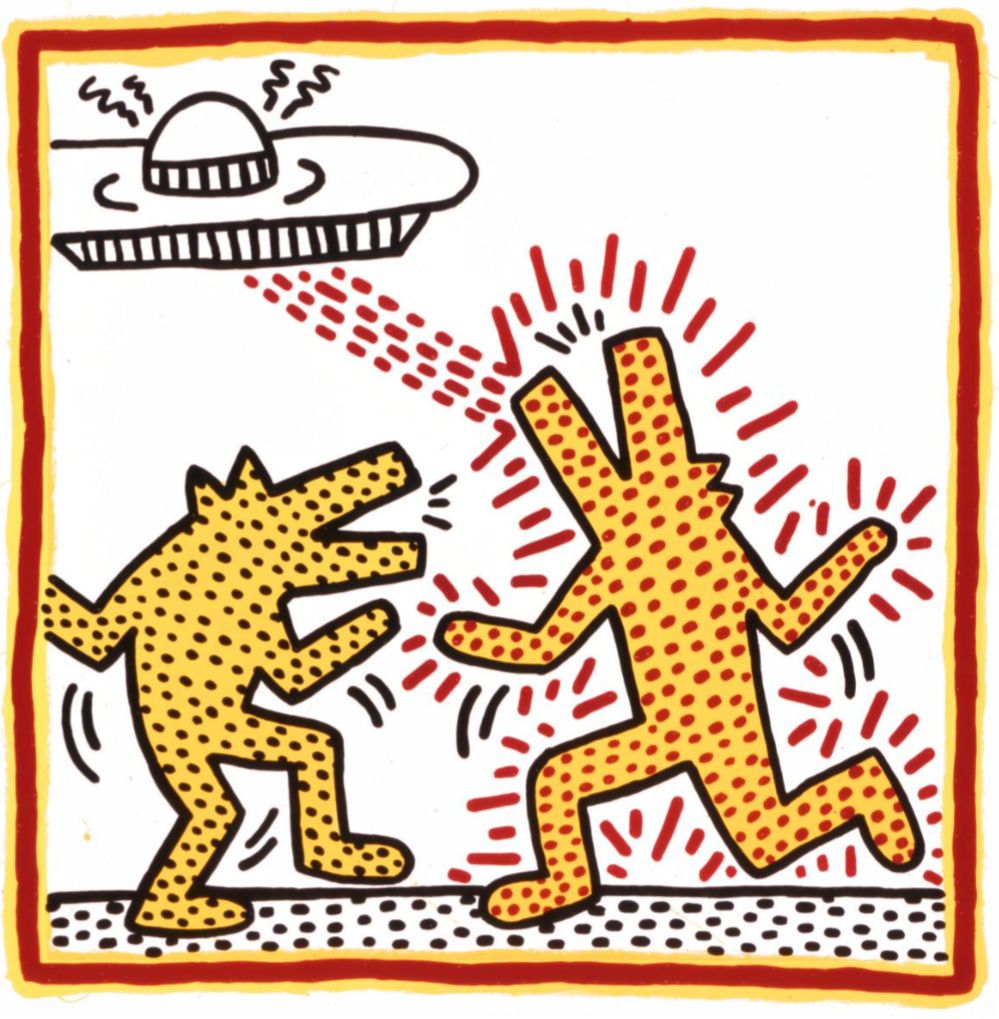 Soon after moving to New York to study at the School of Visual Arts, he became friends with classmates Kenny Scharf (his one time roommate),[116] Samantha McEwen, and John Sex.[117] Eventually, he befriended Jean-Michel Basquiat, who would write his SAMO graffiti around the campus.[118] When Basquiat died in 1988, Haring wrote his obituary for Vogue magazine, and he paid homage to him with the painting A Pile of Crowns for Jean-Michel Basquiat (1988).[119][120] In 1979, Haring met photographer Tseng Kwong Chi in the East Village. They became friends and he documented much of Haring's career.[121] In 1980, Haring met and began collaborating with graffiti artist Angel "LA II" Ortiz.[29] Haring recounted: "We just immediately hit it off. It's as if we'd known each other all our lives. He's like my little brother."[29] Ortiz's artistry formed an important part of Haring's work that had gone unacknowledged by the art establishment.[122][123] Following Haring's death, Ortiz stopped receiving credit and payment for his part in Haring's work. According to Montez, author of the book Keith Haring's Line: Race and the Performance of Desire, the Keith Haring Foundation and the art world have since made strides to rectify Ortiz's erasure.[124] By the early 1980s, Haring had established friendships with fellow emerging artists Fab 5 Freddy and Futura 2000, and singer Madonna.[12][125] In 1982, Haring befriended Andy Warhol, who became his mentor and later the theme of his 1986 Andy Mouse series.[126] Warhol also created a portrait of Haring and his partner Juan Dubose in 1983.[127] Through Warhol, Haring became friends with Grace Jones, Francesco Clemente, and Yoko Ono.[12] He also formed friendships with George Condo, Jean-Charles de Castelbajac, and Claude Picasso.[128] Haring met accessories designer Bobby Breslau in the early 1980s. Haring looked to Breslau for guidance and called him his "Jewish mother".[129] Breslau introduced Haring to his friend Larry Levan, resident DJ at the Paradise Garage.[129] Breslau inspired Haring to work with leather hides and he was the manager of the Pop Shop until his death in 1987.[130] Art dealer Yves Arman was Haring's close friend, and Haring was the godfather of his daughter. Haring said Arman was "probably the best supporter I had in the art world."[12] In 1989, Arman was killed in a car accident on his way to see Haring in Spain.[12] In 1988, Gil Vazquez was invited by a friend to visit Haring's Broadway studio.[131] Haring and Vazquez became close friends and spent a great deal of time together. Before his death, Haring set up a foundation bearing his name. He appointed his assistant and studio manager Julia Gruen to be the executive director; she began working for him in 1984.[132] Vazquez is the board president of the foundation, which is based at Haring's Broadway studio.[133] |
交友関係 スクール・オブ・ヴィジュアル・アーツで学ぶためにニューヨークに移って間もなく、同級生のケニー・シャーフ(一時期ルームメイトだった)、[116] サマンサ・マキューエン、ジョン・セックスらと親しくなった[117]。やがてジャン=ミシェル・バスキアと親しくなり、バスキアはキャンパスのあちこち にSAMOのグラフィティを書くようになる。 [1988年にバスキアが亡くなると、ヘリングは『ヴォーグ』誌に彼の追悼記事を書き、絵画『A Pile of Crowns for Jean-Michel Basquiat』(1988年)でバスキアへのオマージュを捧げた[119][120]。 1979年、ヘリングはイースト・ヴィレッジで写真家のツェン・クォン・チーと出会う。1980年、ヘリングはグラフィティ・アーティストのアンヘル・ 「LA II」・オルティスと出会い、コラボレーションを始める[29]: 「私たちはすぐに意気投合した。まるでお互いの人生をずっと知っているかのようだった。彼は私の弟のようなものだ」[29] オルティスの芸術性はヘリングの作品の重要な部分を形成していたが、それは芸術の確立によって認識されることはなかった[122][123] ヘリングの死後、オルティスはヘリングの作品における彼の役割に対するクレジットと支払いを受けることをやめた。キース・ヘリングズ・ライン』の著者であ るモンテスによれば、「人種と欲望のパフォーマンス」である: 人種と欲望のパフォーマティビティ』の著者であるモンテスによれば、キース・ヘリング財団とアート界はその後、オルティスの抹殺を正すための努力を続けて いる[124]。 1980年代初頭までに、ヘリングは同じ新進アーティストのファブ5・フレディやフューチュラ2000、歌手のマドンナと友好関係を築いていた[12] [125] 1982年、ヘリングはアンディ・ウォーホルと親しくなり、彼は彼のメンターとなり、後に1986年のアンディ・マウス・シリーズのテーマとなった。 [126]ウォーホルはまた、1983年にヘリングと彼のパートナーであるフアン・デュボーズの肖像画を制作した[127]。ウォーホルを通して、ヘリン グはグレース・ジョーンズ、フランチェスコ・クレメンテ、オノ・ヨーコと友人になった[12]。 1980年代初頭、ヘリングはアクセサリー・デザイナーのボビー・ブレスローと出会う。ヘリングはブレスラウに指導を仰ぎ、彼を「ユダヤ人の母」と呼んだ [129]。ブレスラウはヘリングに、パラダイス・ガレージのレジデントDJであった友人のラリー・レヴァンを紹介した[129]。ブレスラウはヘリング に皮革を使った仕事をするよう促し、1987年に亡くなるまでポップ・ショップのマネージャーを務めた[130]。 アートディーラーのイヴ・アーマンはヘリングの親友であり、ヘリングは彼の娘の名付け親でもあった。1989年、アーマンはスペインでヘリングに会いに行 く途中、交通事故で亡くなった[12]。 1988年、ギル・バスケスは友人に誘われ、ヘリングのブロードウェイのスタジオを訪れた[131]。生前、ヘリングは自分の名前を冠した財団を設立し た。バスケスは財団の理事長を務めており、財団はヘリングのブロードウェイのスタジオを拠点としている[133]。 |
Legacy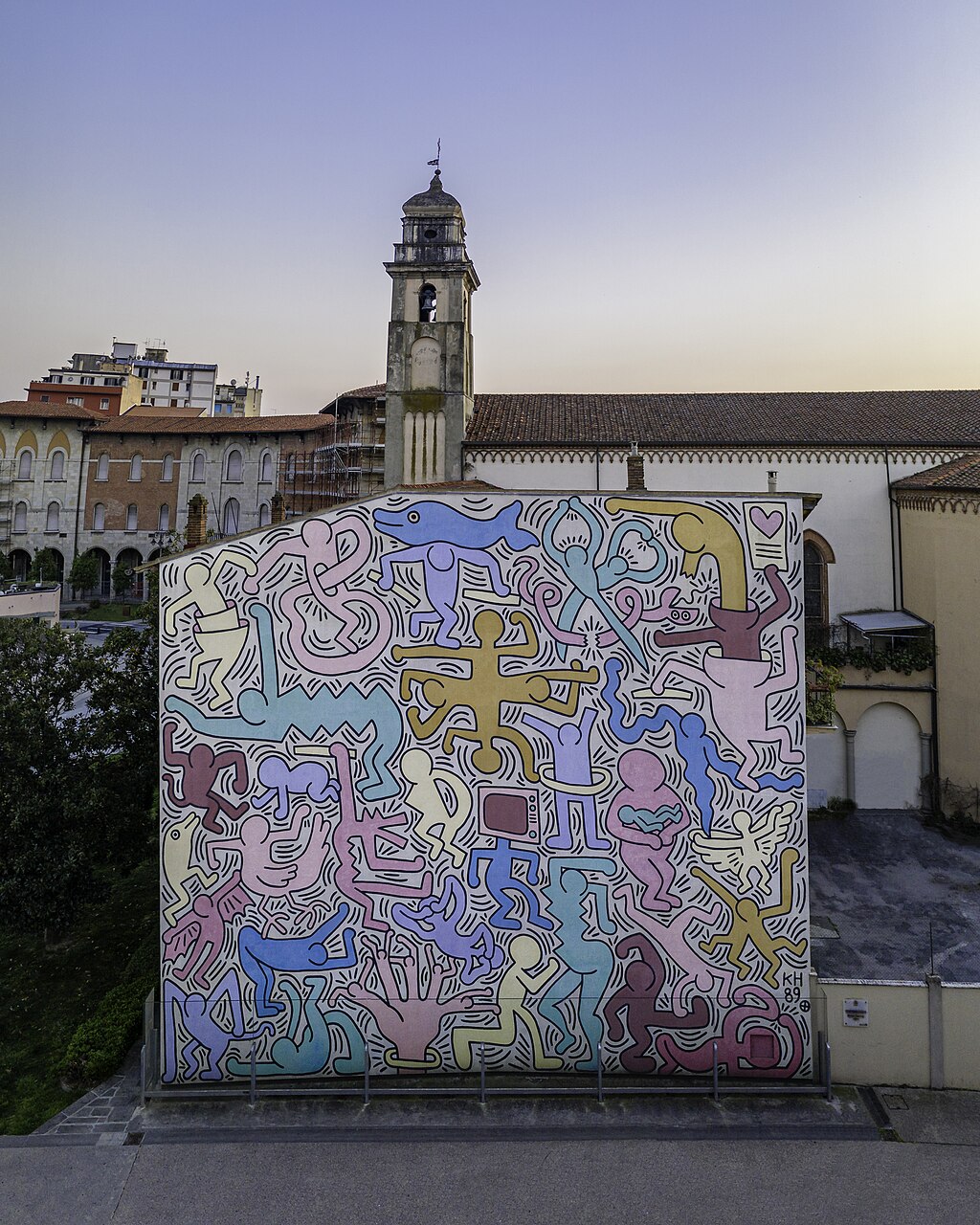 Tuttomondo (1989) mural at the church of Sant'Antonio Abate in Pisa, Italy The Keith Haring Foundation In 1989, Haring established the Keith Haring Foundation to provide funding and imagery to AIDS organizations and children's programs. The foundation's stated goal is to keep his wishes and expand his legacy by providing grants and funding to non-profit organizations that educate disadvantaged youths and inform the public about HIV and AIDS. It also shares his work and contains information about his life.[134] The foundation also supports arts and educational institutions by funding exhibitions, educational programs, and publications.[134] In 2010, the foundation partnered with the AIDS Service Center NYC to open the Keith Haring ASC Harlem Center to provide HIV peer education and access to care services in Harlem.[135] Accolades and tributes As a celebration of his life, Madonna declared that the final American date of her 1990 Blond Ambition World Tour would be a benefit concert for Haring's memory. The more than $300,000 the show made from ticket sales was donated to the Foundation for AIDS Research.[136] The act was documented in the 1991 film Madonna: Truth or Dare.[137] Haring's work was featured in several of Red Hot Organization's efforts to raise money for AIDS and AIDS awareness, specifically its first two albums, Red Hot + Blue (1990) and Red Hot + Dance (1992), the latter of which used Haring's work on its cover. His art remains on display worldwide.[6] In 1991, Haring was commemorated on the AIDS Memorial Quilt with his famous baby icon on a fabric panel. The baby was embroidered by Haring's aunt, Jeannette Ebling, and Haring's mother, Joan Haring, did much of the sewing.[138] Tim Finn wrote the song "Hit The Ground Running", on his album Before & After (1993), in memory of Haring.[139] In 2006, Haring was named by Equality Forum as one of their 31 Icons of LGBT History Month.[140] In 2008, Haring had a balloon in tribute to him at the Macy's Thanksgiving Day Parade.[141] According to artnet.com, Haring had always dreamed of creating a balloon for the parade. "Eighteen years on from his death, this wish came true on what would have been his 50th birthday. It later fronted the main entrance to Central Park's AIDS Walk in 2014. The balloon is also remembered for crashing into NBC's onsite booth and taking its broadcast temporarily off air."[142] On May 4, 2012, on what would have been Haring's 54th birthday, Google honored him in a Google Doodle.[143] In 2014, Haring was one of the inaugural honorees in the Rainbow Honor Walk. The Rainbow Honor Walk is a walk of fame in San Francisco's Castro neighborhood noting LGBTQ people who have "made significant contributions in their fields."[144][145][146] In June 2019, Haring was one of the inaugural fifty American "pioneers, trailblazers, and heroes" inducted on the National LGBTQ Wall of Honor within the Stonewall National Monument (SNM) in New York City's Stonewall Inn.[147][148] The SNM is the first U.S. national monument dedicated to LGBTQ rights and history,[149] and the wall's unveiling was timed to take place during the 50th anniversary of the Stonewall riots.[150] In 2021, Polaroid honored Haring with a Polaroid Now camera and Polaroid i-Type instant film decorated with his signature motifs.[151][152] In 2024, a historical marker was dedicated to Haring in his hometown of Kutztown, Pennsylvania.[153] In popular culture 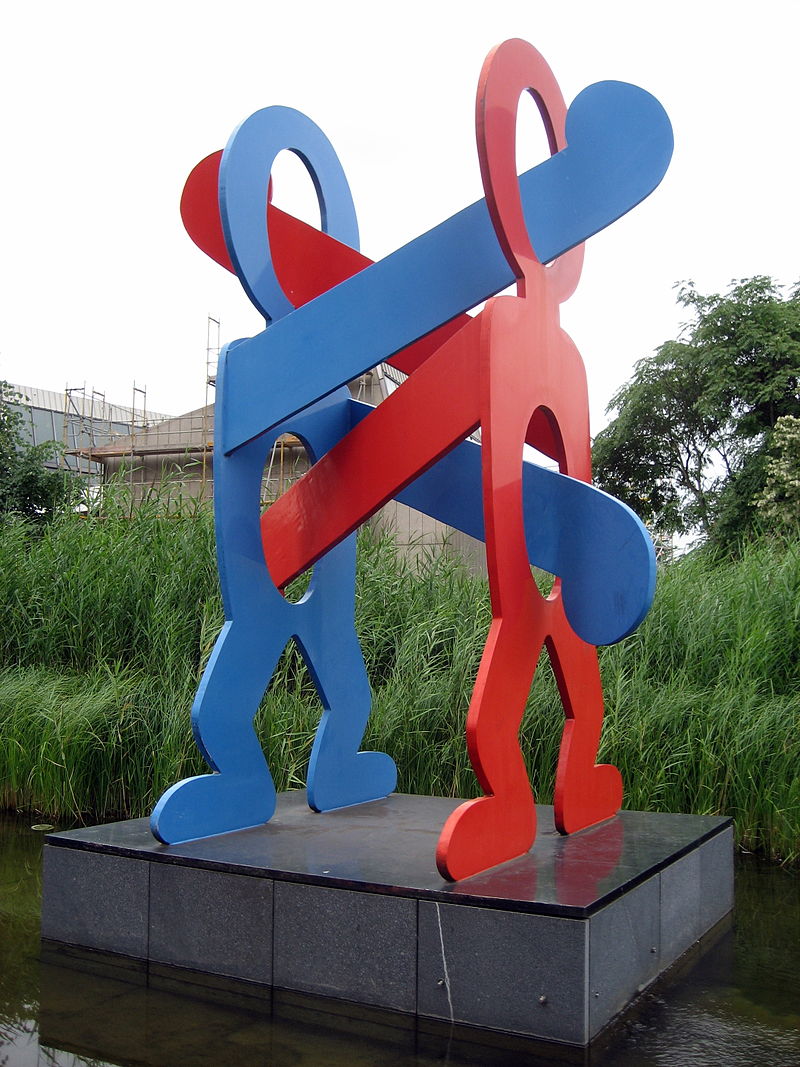 The Boxers (1987) sculpture in Berlin, Germany Haring's signature style is frequently seen in various fashion collections. His estate has collaborated with brands such as Adidas, Lacoste, UNIQLO, Supreme, Reebok, Tenga, and Coach.[154][155] Haring is the subject of a composition, Haring at the Exhibition, written and performed by Italian composer Lorenzo Ferrero in collaboration with DJ Nicola Guiducci. The work combines excerpts from popular chart music of the 1980s with samples of classical music compositions by Lorenzo Ferrero and synthesized sounds. It was featured at "The Keith Haring Show", an exhibition which took place in 2005 at the Triennale di Milano.[156] In 2008, filmmaker Christina Clausen released the documentary The Universe of Keith Haring. In the film, Haring's legacy is "resurrected through colorful archival footage and remembered by friends and admirers such as artists Kenny Scharf and Yoko Ono, gallery owners Jeffrey Deitch and Tony Shafrazi, and choreographer Bill T. Jones".[157] Madonna used Haring's art as animated backdrops for her 2008/2009 Sticky and Sweet Tour. The animation featured his trademark blocky figures dancing in beat to an updated remix of "Into the Groove".[158] Keith Haring: Double Retrospect is a monster-sized jigsaw puzzle by Ravensburger measuring in at 17 by 6 feet (5.2 by 1.8 m) with 32,256 pieces, breaking Guinness Book of World Records for the largest puzzle ever made in 2011. The puzzle uses 32 pieces of his work and weighs 42 pounds (19 kg).[159] In 2017, his sister Kay Haring wrote a children's book, Keith Haring: The Boy Who Just Kept Drawing, which ranked among the top ten sellers every week for over a year in the Amazon category of Children's Art History.[160] In July 2020, BBC Two broadcast the documentary Keith Haring: Street Art Boy, which is built from a series of interviews between Haring and art critic John Gruen in 1989.[161][162] The documentary, which was directed by Ben Anthony, aired in December 2020 on PBS as part of the American Masters series.[163][164] |
遺産 イタリア、ピサのサンタントニオ・アバーテ教会の壁画『Tuttomondo』(1989年 キース・ヘリング財団 1989年、ヘリングはキース・ヘリング財団を設立し、エイズ団体や子供たちのプログラムに資金とイメージを提供した。この財団は、恵まれない青少年を教 育し、HIVとエイズについて一般の人々に知らせる非営利団体に助成金と資金を提供することで、彼の遺志を守り、彼の遺産を拡大することを目標としてい る。同財団はまた、展覧会、教育プログラム、出版物に資金を提供することで、芸術や教育機関を支援している[134]。2010年、同財団はAIDS Service Center NYCと提携し、ハーレムにHIVピア教育とケアサービスへのアクセスを提供するキース・ヘリングASCハーレムセンターを開設した[135]。 称賛と賛辞 マドンナは、彼の人生を祝うために、1990年のブロンド・アンビション・ワールド・ツアーのアメリカ最終日をヘリングの追悼のための慈善コンサートにす ると宣言した。チケットの売り上げ30万ドル以上はエイズ研究財団に寄付された[136]。この行為は1991年の映画『Madonna: Truth or Dare』に記録されている[137]。 ヘリングの作品は、レッド・ホット・オーガニゼーションのエイズとエイズ啓発のための資金集めの取り組みのいくつかで取り上げられ、特に最初の2枚のアル バム『Red Hot + Blue』(1990年)と『Red Hot + Dance』(1992年)にはヘリングの作品がジャケットに使用されている。彼のアートは現在も世界中で展示されている[6]。 1991年、ヘリングはエイズ・メモリアル・キルトに、彼の有名な赤ん坊のアイコンが描かれた布のパネルで記念された。赤ちゃんはヘリングの叔母である ジャネット・エブリングによって刺繍され、ヘリングの母であるジョーン・ヘリングが縫製の多くを担当した[138]。 ティム・フィンはアルバム『Before & After』(1993年)の中で、ヘリングを偲んで「Hit The Ground Running」という曲を書いた[139]。 2006年、ヘリングはイクオリティ・フォーラムによってLGBT歴史月間の31人のアイコンの一人に選ばれた[140]。 artnet.comによると、ヘリングはパレードのためにバルーンを作ることを夢見ていたという。「彼の死から18年後、その願いは彼の50歳の誕生日 に実現した。このバルーンはその後、2014年のセントラルパークのエイズ・ウォークの正面入り口に飾られた。2012年5月4日、ヘリングの54回目の 誕生日に、GoogleはGoogle Doodleで彼を称えた[143]。 2014年、ヘリングはレインボー・オナー・ウォークの初代受賞者の一人となった。レインボー・オナー・ウォークは、サンフランシスコのカストロ地区にあ る、「それぞれの分野で多大な貢献をした」LGBTQの人々を記した名声の散歩道である[144][145][146]。 2019年6月、ヘリングはニューヨークのストーンウォール・インにあるストーンウォール国民記念碑(SNM)内の「国民LGBTQ名誉の壁」に選出され た50人のアメリカ人「先駆者、先駆者、英雄」の一人となった[147][148]。SNMはLGBTQの権利と歴史に捧げられたアメリカ初の国民記念碑 であり[149]、壁の除幕式はストーンウォール暴動50周年のタイミングで行われた[150]。 2021年、ポラロイドはヘリングを称え、彼のシグネチャーモチーフで飾られたPolaroid NowカメラとPolaroid i-Typeインスタントフィルムを贈った[151][152]。 2024年、ヘリングの故郷であるペンシルバニア州カッツタウンに歴史的な標柱が捧げられた[153]。 大衆文化において  ドイツ、ベルリンの彫刻作品『The Boxers』(1987年) ヘリングの特徴的なスタイルは、様々なファッション・コレクションで頻繁に見られる。彼の遺産は、アディダス、ラコステ、ユニクロ、シュプリーム、リー ボック、テンガ、コーチなどのブランドとコラボレーションしている[154][155]。 ヘリングは、イタリアの作曲家ロレンツォ・フェレーロがDJニコラ・グイドゥッチと共同で作曲・演奏した『Haring at the Exhibition』の題材となっている。この作品は、1980年代のポピュラーチャート音楽からの抜粋と、ロレンツォ・フェレーロが作曲したクラシッ ク音楽のサンプル、シンセサイザー音を組み合わせたものである。この作品は、2005年にミラノ・トリエンナーレで開催された展覧会「The Keith Haring Show」で紹介された[156]。 2008年、映画監督のクリスティーナ・クラウゼンはドキュメンタリー映画『The Universe of Keith Haring』を発表した。この映画では、ヘリングの遺産が「色彩豊かな記録映像によってよみがえり、アーティストのケニー・シャーフやオノ・ヨーコ、 ギャラリーオーナーのジェフリー・ダイチやトニー・シャフラジ、振付師のビル・T・ジョーンズといった友人や崇拝者たちによって回想される」[157]。 マドンナは2008/2009年のSticky and Sweetツアーで、ヘリングのアートをアニメーションの背景として使用した。このアニメーションでは、彼のトレードマークであるブロック状の人物が、 「Into the Groove 」の最新リミックスに合わせて踊っていた[158]。 キース・ヘリング ダブル・レトロスペクト』は、Ravensburger社のジグソーパズルで、32,256ピース、17×6フィート(5.2×1.8メートル)というモ ンスターサイズであり、2011年に史上最大のパズルとしてギネス世界記録を更新した。このパズルには彼の作品が32ピース使用されており、重さは42ポ ンド(19kg)である[159]。 2017年、妹のケイ・ヘリングが児童書『キース・ヘリング: The Boy Who Just Kept Drawing』は、アマゾンの子供向け美術史カテゴリーで1年以上にわたって毎週トップ10にランクインした[160]。 2020年7月、BBC Twoはドキュメンタリー番組『キース・ヘリング』を放送した: このドキュメンタリーは、1989年にヘリングと美術評論家のジョン・グルーエンが行った一連のインタビューから構成されている[161][162]。ベ ン・アンソニーが監督を務めたこのドキュメンタリーは、2020年12月にPBSで『American Masters』シリーズの一部として放送された[163][164]。 |
| Influences Haring's work demonstrates political and personal influences. References to his sexual orientation are apparent throughout his work, and his journals confirm its impact on his work.[165] There are symbolic allusions to the AIDS epidemic in some of his later pieces, such as Untitled (cat. no. 27), Silence=Death and his sketch Weeping Woman. In some of his works—including cat. no. 27—the symbolism is subtle, but he also produced some blatantly activist works. Silence=Death, which mirrors the ACT UP poster and uses its motto, is almost universally agreed upon as a work of HIV/AIDS activism.[166] Haring was influenced by William Burroughs' work with Brion Gysin and their book The Third Mind.[12] He was also influenced by fellow artists, including Andy Warhol, Jean-Michel Basquiat, George Condo, and Angel "LA II" Ortiz.[29][12] In some of his art he drew connections between the end of the world and the AIDS virus. In a piece that he made with William Burroughs, he depicts the virus as demon-like creatures, the number 666, and a mushroom cloud.[11] Haring's proximity to the nuclear meltdown at Three Mile Island had a large impact on him. His fear of nuclear disaster started to appear in his art. An example of this is a black and white striped flag that he said symbolized the danger of a nuclear apocalypse.[11] Haring was deeply influenced by the Jesus Movement as a youth, and it continued to play a role in his art for his entire career. The movement was an extremely evangelical, loosely organized, diverse group of Christians. They were known for their anti-materialism and anti-establishment beliefs, focus on the Last Judgment, and their compassionate treatment of the poor. As a young teenager, Haring became very involved in the movement. Religious symbols started to be incorporated into his drawings around that age as well as Jesus Movement sentiments. This includes anti-church establishment views that can be seen in some of his later work.[11] Though his time as a "Jesus Person" did not last beyond his teenage years, religious images, symbols, and references continued to appear in his art. In an interview near the end of his life he commented, "[All] that stuff stuck in my head and even now there are lots of religious images in my work. Some people even think my work is by a religious fanatic or maniac."[11] When Haring was drawing graffiti in the subway, he used a tag to sign his work. His tag, the Radiant Baby, depicts a baby with lines radiating from it, alluding to the Christ Child. He continued to make images depicting the Christ Child, including Nativity scenes in his characteristic style during his time as a subway artist.[11] His last pieces were two religious triptychs; both went to Episcopal cathedrals. In them he illustrates the Last Judgment, though who is being saved in the pieces is ambiguous.[11] |
影響 ヘリングの作品には政治的、個人的な影響が見られる。彼の性的指向への言及は作品を通して明白であり、彼の日記はそれが彼の作品に影響を与えたことを裏付 けている[165]。無題(cat. no.27)、沈黙=死、スケッチ「泣く女」など、晩年の作品のいくつかにはエイズ流行を象徴的に暗示するものがある。cat.No.27を含むいくつか の作品では、象徴性は微妙だが、露骨な活動家的作品も制作している。Silence=Death』は、ACT UPのポスターを反映し、そのモットーを使用したもので、HIV/AIDSのアクティビズムを表現した作品であることは、ほぼ誰もが認めるところである [166]。 また、アンディ・ウォーホル、ジャン=ミシェル・バスキア、ジョージ・コンド、アンヘル・「LA II」・オルティスなどの仲間のアーティストからも影響を受けている[29][12]。ウィリアム・バロウズと共に制作した作品では、ウイルスを悪魔のよ うな生き物、666という数字、キノコ雲として描いている[11]。 ヘリングは、スリーマイル島での核メルトダウンに接近し、大きな影響を受けた。核災害に対する恐怖が彼のアートに現れ始めたのだ。その一例が黒と白のスト ライプの旗で、彼は核による黙示録の危険を象徴していると語った[11]。 ヘリングは青少年時代にジーザス・ムーブメントに深く影響を受け、それは彼のキャリア全体にわたって彼の芸術において役割を果たし続けた。この運動は非常 に福音主義的で、緩く組織された多様なキリスト教徒のグループだった。彼らは反物質主義、反体制的な信念、最後の審判への焦点、貧しい人々への思いやりの ある対応で知られていた。10代の若い頃、ヘリングはこの運動に深く関わるようになった。その頃から宗教的なシンボルが彼の絵に取り入れられるようにな り、ジーザス・ムーブメントの感情も描かれるようになった。イエス・パーソン "としての時期は10代を越えることはなかったが、宗教的なイメージ、シンボル、言及は彼のアートに現れ続けた。人生の終わりに近いインタビューで、彼は こうコメントしている。「(そのすべてが)私の頭の中にこびりついていて、今でも私の作品には宗教的なイメージがたくさんある。私の作品を宗教マニアや狂 信者の作品だと思う人さえいる」[11]。 ヘリングが地下鉄でグラフィティを描いていた頃、彼は作品にサインをするためにタグを使っていた。彼のタグ、「ラディアント・ベイビー」は、キリストの子 を暗示する放射状の線を持つ赤ん坊を描いている。彼は地下鉄画家時代も、キリスト降誕の場面など、キリストの子どもを描いた作品を彼の特徴的なスタイルで 制作し続けた[11]。彼の最後の作品は2つの宗教的なトリプティクで、どちらもエピスコパル大聖堂に送られた。これらの作品では最後の審判が描かれてい るが、誰が救われているのかは曖昧である[11]。 |
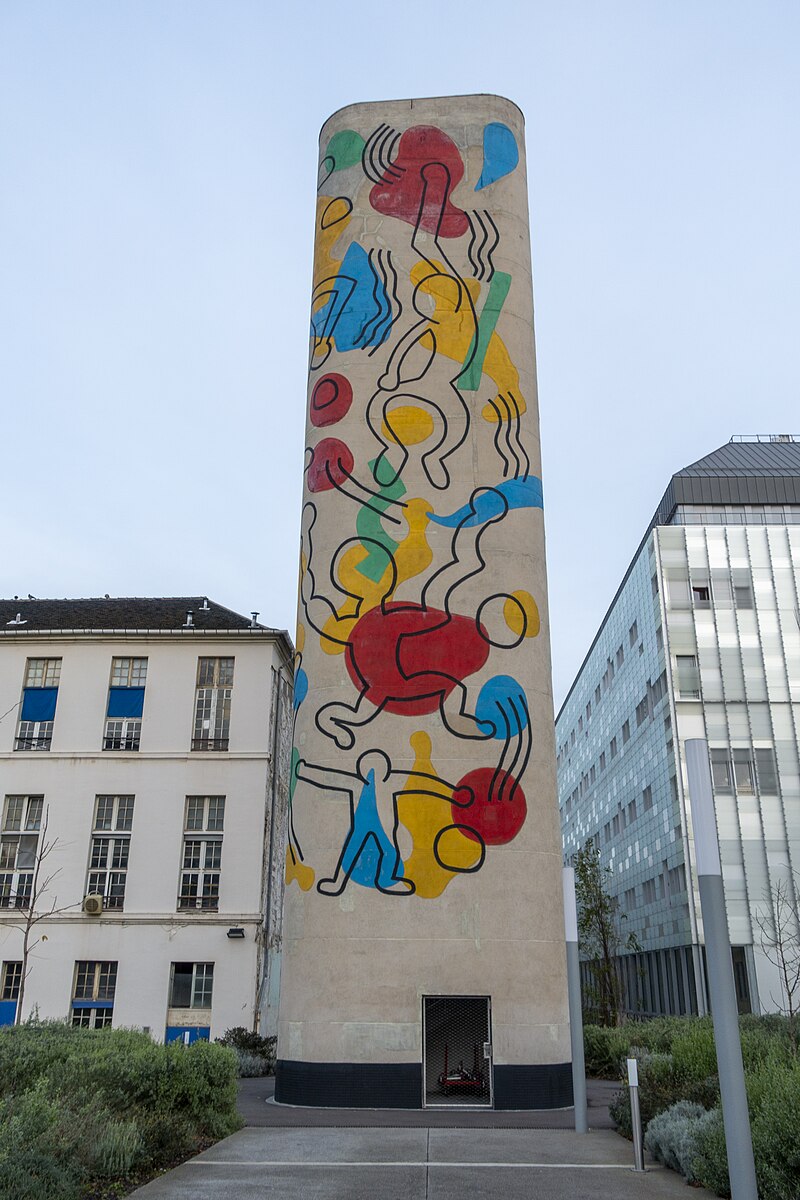 Tower (1987) mural at Necker-Enfants Malades Hospital in Paris, France |
 フランス、パリのネッケル・アンファン・マラード病院の壁画「タワー」(1987年 |
| Exhibitions During his lifetime, Haring had over 50 solo exhibitions, and was represented by well-known galleries such as the Tony Shafrazi Gallery and the Leo Castelli Gallery.[167] Since his death, has been featured in over 150 exhibitions around the world.[168] He has also been the subject of several international retrospectives. Haring had his first solo exhibition at Westbeth Painters Space in February 1981.[25][26] That month he also participated in New York/New Wave exhibit at MoMA PS1.[169] Later that year he had a solo exhibition in the Hal Bromm Gallery,[170] followed by his breakthrough exhibition at the Tony Shafrazi Gallery in 1982.[117] That same year, he took part in documenta 7 in Kassel as well as Public Art Fund's Messages to the Public series in which he created work for a Spectacolor billboard in Times Square.[11] In 1983, Haring contributed work to the Whitney Biennial and the São Paulo Biennial. He also had solo exhibitions at the Fun Gallery, Galerie Watari in Tokyo, and his second show the Tony Shafrazi Gallery.[171][172][35] In 1984, Haring participated in the group show Arte di Frontiera: New York Graffiti in Italy.[173] He participated in the Venice Biennale in 1984 and 1986.[174][36] In 1985, Haring took part in the Paris Biennial and he had his first solo museum exhibition at the CAPC in Bordeaux.[175][3] In 1986, three of Haring's sculptures were placed at Dag Hammarskjöld Plaza outside the United Nations headquarters.[176][90] Two of the works were displayed at Riverside Park from May 1988 to May 1989.[90] In 1991–92, Haring's Figure Balancing on Dog was displayed in Dante Park in Manhattan.[90] In 1996, a retrospective at the Museum of Contemporary Art Australia was the first major exhibition of his work in Australia. His art was the subject of a 1997 retrospective at the Whitney Museum of American Art in New York, curated by Elisabeth Sussman.[177] The Public Art Fund, in collaboration with the Estate of Keith Haring, organized a multi-site installation of his outdoor sculptures at Central Park's Doris C. Freedman Plaza and along the Park Avenue Malls.[178] This public exhibition occurred simultaneously with the retrospective at the Whitney.[179] The sculptures later traveled to the West Coast in 1998. The San Francisco Arts Commission displayed 10 sculptures around San Francisco to coincide with Haring's retrospective at the San Francisco Museum of Modern Art.[180] The city of West Hollywood and Haring's estate also presented his sculptures on Santa Monica Boulevard.[181] In 2007, Haring's painted aluminum sculpture Self-Portrait (1989) was displayed in the lobby of the Arsenal in Central Park, as part of the retrospective exhibition The Outdoor Gallery: 40 Years of Public Art in New York City Parks.[90] In 2008, there was a retrospective exhibition at the MAC in Lyon, France. In February 2010, on the occasion of the 20th anniversary of the Haring's death, the Tony Shafrazi Gallery showed an exhibition containing dozens of works from every stage of Haring's career.[182] In March 2012, a retrospective exhibit of his work, Keith Haring: 1978–1982, opened at the Brooklyn Museum in New York.[183] In April 2013, Keith Haring: The Political Line opened at the Musée d'Art Moderne de la Ville de Paris and Le Cent Quatre. In November 2014, then at the De Young Museum in San Francisco.[184] From December 2016 to June 2017, the Petersen Automotive Museum in Los Angeles exhibited The Unconventional Canvases of Keith Haring, which featured five vehicles that Haring painted.[185] In 2019, Haring's work was exhibited at Gladstone Gallery in Belgium.[186] The first major UK exhibition of Haring's work, featuring more than 85 artworks, was at Tate Liverpool from June to November 2019.[187] From December 2019 to March 2020, the National Gallery of Victoria in Melbourne exhibited Keith Haring and Jean-Michel Basquiat: Crossing Lines.[188] In February 2021, the Museum of Contemporary Art Denver opened the exhibition Keith Haring: Grace House Mural, which displays 13 panels from a mural Haring painted at a Catholic youth center on the Upper West Side of Manhattan in either March 1983 or 1984.[189] The mural—which featured Haring's radiant baby, barking dog, and dancing man figures—spanned three floors and 85 feet. When Grace House was sold, its operator, the Church of the Ascension, went against the Keith Haring Foundation's wishes of securing a buyer who would maintain the work. Instead, the church had sections of the mural cut out and sold at auction in 2019 to an anonymous private collector for $3.86 million. The panels are on loan to the museum and will appear on exhibit until August 22, 2021. In 2022, the exhibition Keith Haring: Grace House Mural was displayed at the Schunck Museum in Heerlen.[190] In 2023, The Broad presented Haring's first museum exhibition in Los Angeles, Keith Haring: Art is for Everyone.[191] |
展覧会 生前、ヘリングは50以上の個展を開催し、トニー・シャフラジ・ギャラリーやレオ・カステッリ・ギャラリーなどの有名なギャラリーに所属していた [167]。 1981年2月、ウェストベス・ペインターズ・スペースで初の個展を開催[25][26]。 同月、MoMA PS1で開催されたニューヨーク/ニューウェーブ展にも参加[169]。同年末、ハル・ブロム・ギャラリーで個展を開催[170]、1982年にはト ニー・シャフラジ・ギャラリーで画期的な個展を開催した。 [同年、カッセルで開催されたドクメンタ7に参加したほか、パブリック・アート・ファンドの「メッセージ・トゥ・ザ・パブリック」シリーズに参加し、タイ ムズ・スクエアのスペクタカラー看板のための作品を制作した[11]。1983年、ヘリングはホイットニー・ビエンナーレとサンパウロ・ビエンナーレに作 品を提供した。また、ファン・ギャラリー、ギャルリー・ワタリ(東京)、トニー・シャフラジ・ギャラリーで2度目の個展を開催した[171][172] [35]。 1984年、ヘリングはグループ展「Arte di Frontiera」に参加した: 1985年、ヘリングはパリ・ビエンナーレに参加し、ボルドーのCAPCで初の美術館での個展を開催した[174][36]。 [175][3]1986年、ヘリングの彫刻作品3点が国連本部外のダグ・ハンマーショルド広場に設置された[176][90]。1988年5月から 1989年5月まで、2点の作品がリバーサイド・パークに展示された[90]。1991年から92年にかけて、ヘリングの《Figure Balancing on Dog》がマンハッタンのダンテ・パークに展示された[90]。 1996年、オーストラリア現代美術館で開催された回顧展は、彼の作品のオーストラリア初の大規模な展覧会となった。パブリック・アート・ファンドは、 キース・ヘリングのエステートと共同で、セントラル・パークのドリス・C・フリードマン・プラザとパーク・アヴェニュー・モールズ沿いの複数の場所で、彼 の屋外彫刻のインスタレーションを企画した[178]。この公募展は、ホイットニーでの回顧展と同時に開催された[179]。サンフランシスコ近代美術館 でのヘリングの回顧展に合わせ、サンフランシスコ芸術委員会はサンフランシスコ各地に10点の彫刻を展示した[180]。ウェスト・ハリウッド市とヘリン グの遺産管理団体もサンタモニカ大通りでヘリングの彫刻を展示した[181]。 2007年、回顧展「The Outdoor Gallery」の一環として、セントラルパークのアーセナルのロビーにヘリングのアルミニウムのペイント彫刻「Self-Portrait」(1989 年)が展示された: ニューヨークの公園におけるパブリック・アートの40年[90]。 2008年には、フランスのリヨンにあるMACで回顧展が開催された。2010年2月、ヘリングの没後20周年を記念して、トニー・シャフラジ・ギャラ リーでヘリングのキャリアのあらゆる段階から数十点の作品を含む展覧会が開催された[182]: 1978年から1982年にかけては、ニューヨークのブルックリン美術館で開催された[183]: The Political Line』がパリ市立近代美術館とLe Cent Quatreで開催された。2014年11月、その後サンフランシスコのデ・ヤング美術館で開催された[184]。 2016年12月から2017年6月にかけて、ロサンゼルスのピーターセン・オートモーティブ・ミュージアムで、ヘリングが描いた5台の車を展示した 『The Unconventional Canvases of Keith Haring』が開催された[185]。 2019年、ベルギーのグラッドストーン・ギャラリーでヘリングの作品が展示された。 [186] 英国では初の大規模なヘリングの展覧会が開催され、85点以上の作品が展示され、2019年6月から11月までテート・リヴァプールで開催された [187] 2019年12月から2020年3月まで、メルボルンのビクトリア国民美術館でKeith Haring and Jean-Michel Basquiatが展示された: Crossing Lines」を開催した[188]。 2021年2月、デンバー現代美術館はキース・ヘリング展を開催した: グレース・ハウスの壁画は、ヘリングが1983年3月か1984年3月にマンハッタンのアッパー・ウエスト・サイドにあるカトリックの青少年センターで描 いた壁画のパネル13枚を展示している[189]。グレース・ハウスが売却されたとき、その運営者である昇天教会は、作品を維持する買い手を確保するとい うキース・ヘリング財団の意向に背いた。代わりに教会は壁画の一部を切り取らせ、2019年のオークションで匿名の個人コレクターに386万ドルで売却し た。パネルは美術館に貸し出され、2021年8月22日まで展示される。 2022年にはキース・ヘリング展が開催される: 2023年、ザ・ブロードはロサンゼルスでヘリングの初の美術館での展覧会『Keith Haring: Art is for Everyone』を開催した[191]: アートはみんなのものである[191]。 |
| Art market A CBS Evening News report from October 1982 shows scenes from Haring's solo exhibit at the Tony Shafrazi Gallery in SoHo. It was reported that over a quarter of a million dollars worth of paintings were sold within the first few days of the show's opening.[192] Although he was an established artist by 1983, Shafrazi stated that Haring wanted to keep his prices low.[193] His prices ranged from $3,000 for a drawing to $15,000 for a large painting.[193] By 1984, his works were selling for up to $20,000 and he had an annual income of $250,000.[45][194] Haring created the Pop Shop in 1986 in the SoHo district of Manhattan, selling T-shirts, toys, posters, and other objects that show his works—allowing his works to be accessible to a larger number of people.[77] Speaking about the Pop Shop in 1989, Haring said: "For the past five or six years, the rewards I've gotten are very disproportionate to what I deserve...I make a lot more money than what I should make, so it's a little bit of guilt, of wanting to give it back."[5] Haring was represented until his death by art dealer Tony Shafrazi.[195] Since his death in 1990, his estate has been administered by the Keith Haring Foundation, which is represented by Gladstone Gallery.[196] In May 2017, Haring's painting Untitled (1982), which features his signature symbols—the radiant baby, barking dogs, angels and red Xs—sold for $6.5 million at Sotheby's in New York, becoming the most expensive Haring artwork sold at auction.[197] However, the winning bidder, Anatole Shagalov, failed to pay and Sotheby's resold it for $4.4 million in August 2017.[198] In October 2020, the Keith Haring Foundation hired Sotheby's to hold an online auction of more than 140 works from Haring's collection.[199] Dear Keith surpassed its estimate of $1.4 million to achieve $4.6 million with a 100 percent sell-through rate by lot. All proceeds from the sale went to the Lesbian, Gay, Bisexual & Transgender Community Center of New York.[199] In December 2021, Haring's 1982 painting Untitled (Acrobats) from the collection of Peter M. Brant and Stephanie Seymour, sold for $5.5 million at Sotheby's in New York.[200] In 2022, the drawing of ''Radiant Baby'' that he had made on the wall of his childhood home in the early 1980s was removed by its owners (together with part of the wall panelling) and offered for sale.[201] Collections Haring's work is in major private and public collections, including the Museum of Modern Art, the Morgan Library and Museum, and the Whitney Museum of American Art in New York City; Los Angeles County Museum of Art; the Art Institute of Chicago; the Bass Museum in Miami; Musée d'Art Moderne de la Ville de Paris; the Brant Foundation Art Study Center in Greenwich, Connecticut; the Carnegie Museum of Art and the Andy Warhol Museum in Pittsburgh; the Ludwig Museum in Cologne; and the Stedelijk Museum in Amsterdam.[202] He also created a wide variety of public works, including the infirmary at Children's Village in Dobbs Ferry, New York,[203] and the second floor men's room in the Lesbian, Gay, Bisexual & Transgender Community Center in Manhattan, which was later transformed into an office and is known as the Keith Haring Room.[204][205] In January 2019, the exhibit "Keith Haring's New York" opened at New York Law School in the main building of its Tribeca campus.[206] The Nakamura Keith Haring Collection, established in 2007 in Hokuto, Yamanashi, Japan, is an art museum exhibiting exclusively the artworks of Haring.[207][208] Authentication issues There is no catalogue raisonné for Haring, but there is copious information about him on the estate's website and elsewhere, enabling prospective buyers or sellers to research exhibition history.[209] Whilst no formal catalogue raisonne exists for Haring's works "Keith Haring 1982–1990: Editions on Paper – the Complete Printed Works" by Klaus Littmann is widely considered to be the most authoritative guide on the subject of his printed editions.[210] In 2012, the Keith Haring Foundation disbanded its authentication board to focus on its charitable activities.[211] That same year, it donated $1 million to support exhibitions at the Whitney Museum of American Art.[195] In 2014, a group of nine art collectors sued the foundation, claiming that it has cost them at least $40 million by refusing to authenticate 80 purported Haring works.[212] In 2015, a judge ruled in favor of the foundation.[213] |
アート市場 1982年10月のCBSイブニング・ニュースの報道では、ソーホーのトニー・シャフラジ・ギャラリーでのヘリングの個展の様子が映し出されている。 1983年までにはアーティストとしての地位を確立していたが、シャフラジは、ヘリングは価格を低く抑えたかったと述べている[193]。1984年まで には、彼の作品は最高で20,000ドルで売られるようになり、25万ドルの年収を得ていた[45][194]。 ヘリングは1986年にマンハッタンのソーホー地区にポップ・ショップを設立し、Tシャツ、玩具、ポスター、その他彼の作品を示すオブジェを販売した: 「過去5、6年間、私が得てきた報酬は、私にふさわしいものにはとても不釣り合いだった......私は、私が稼ぐべき金額よりも多くのお金を稼いでい る。 1990年の死後、彼の遺産はグラッドストーン・ギャラリーが代表を務めるキース・ヘリング財団によって管理されている[196]。2017年5月、ヘリ ングの絵画『Untitled』(1982年)は、彼の特徴的なシンボルである放射状の赤ん坊、吠える犬、天使、赤いXが描かれており、サザビーズで 650万ドルで落札された。 ニューヨークのサザビーズで500万ドルで落札され、オークションで落札されたヘリングの作品の中で最も高額となった[197]。しかし、落札者のアナ トール・シャガロフが支払いに応じなかったため、サザビーズは2017年8月に440万ドルで再落札した[198]。 2020年10月、キース・ヘリング財団はサザビーズに依頼し、ヘリングのコレクションから140点以上の作品のオンライン・オークションを開催した [199]。 Dear Keithは見積もり140万ドルを上回り、ロットごとのセルスルー率100パーセントで460万ドルを達成した。199]2021年12月、ピーター・ M・ブラントとステファニー・シーモアのコレクションから、ヘリングの1982年の絵画『Untitled (Acrobats)』がニューヨークのサザビーズで550万ドルで落札された[200]。 2022年、彼が1980年代初頭に幼少期に住んでいた家の壁に描いていた''Radiant Baby''のドローイングが、その所有者によって(壁のパネルの一部とともに)取り外され、売りに出された[201]。 コレクション ヘリングの作品は、ニューヨーク近代美術館、モーガン図書館・美術館、ホイットニー美術館、ロサンゼルス郡立美術館、シカゴ美術館、マイアミのバス美術 館、パリ市立近代美術館、コネチカット州グリニッジのブラント財団アート・スタディ・センター、ピッツバーグのカーネギー美術館とアンディ・ウォーホル美 術館、ケルンのルートヴィヒ美術館、アムステルダムのステデライク美術館など、主要な個人および公的コレクションに収蔵されている。 [202]また、ニューヨークのドブスフェリーにあるチルドレンズ・ヴィレッジの保健室[203]や、マンハッタンのレズビアン、ゲイ、バイセクシュアル &トランスジェンダー・コミュニティ・センターの2階の男子トイレ(後にオフィスに改装され、キース・ヘリング・ルームとして知られる)など、多種多様な 公共作品も手がけている[204][205]。 2019年1月には、ニューヨーク・ロースクールのトライベッカ・キャンパス本館で「キース・ヘリングのニューヨーク」という展示が始まった[206]。 2007年に山梨県北杜市に設立された中村キース・ヘリング・コレクションは、ヘリングの作品のみを展示する美術館である[207][208]。 真正性の問題 ヘリングのカタログ・レゾネは存在しないが、エステートのウェブサイトなどにはヘリングに関する膨大な情報が掲載されており、買い手や売り手が展覧会の歴 史を調べることができる[209]: Klaus Littmannによる 「Editions on Paper - the Complete Printed Works 」は、彼の版画作品に関する最も権威のあるガイドブックであると広く考えられている[210]。 2012年、キース・ヘリング財団は慈善活動に専念するために鑑定委員会を解散した[211]。 同年、ホイットニー美術館での展覧会を支援するために100万ドルを寄付した[195]。2014年、9人のアートコレクターのグループは、ヘリングの作 品とされる80点の鑑定を拒否したことによって少なくとも4000万ドルの損害を被ったと主張し、財団を訴えた[212]。2015年、裁判官は財団を支 持する判決を下した[213]。 |
| LGBT culture in New York City List of LGBT people from New York City NYC Pride March +++++ Haring, Keith (2010). Keith Haring Journals, Penguin Classics. ISBN 978-0143105978. Reading Public Museum, Keith Haring: Journey of the Radiant Baby, Piermont, New Hampshire: Bunker Hill Publishing Co., 2006. ISBN 978-1-59373-052-9. Van Pee, Yasmine (2004). Boredom Is Always Counterrevolutionary: Art in Downtown New York Nightclubs, 1978–1985 (M.A. thesis). Center for Curatorial Studies at Bard College. ++++++++++ Blinderman, Barry (1990). Keith Haring: Future Primeval. University Galleries, Illinois State University. ISBN 978-1-55859-378-7. Gruen, John (1991). Keith Haring: The Authorized Biography. Simon & Schuster. ISBN 978-0-671-78150-7. |
ニューヨークのLGBT文化 ニューヨーク出身のLGBTリスト ニューヨーク・プライド・マーチ ++++++++++ ヘリング、キース(2010年)。キース・ヘリングの日記、ペンギン・クラシックス。ISBN 978-0143105978。 リーディング公共博物館、キース・ヘリング:Radiant Babyの旅、ニューハンプシャー州ピアモント:バンカーヒル出版、2006年。ISBN 978-1-59373-052-9。 ヴァン・ピー、ヤスミン(2004年)。『退屈は常に反革命的である:1978年から1985年のニューヨークのダウンタウンにあるナイトクラブにおけるアート』(修士論文)。バードカレッジのキュレーター研究センター。 ++++++++ ブラインドマン、バリー(1990年)。キース・ヘリング:未来の原始。イリノイ州立大学大学ギャラリー。ISBN 978-1-55859-378-7。 グルーン、ジョン(1991年)。キース・ヘリング:公式伝記。サイモン&シュスター。ISBN 978-0-671-78150-7。 |
| https://en.wikipedia.org/wiki/Keith_Haring |
☆中村キース・ヘリング美術館の館長:中村和男氏
中村 和男 Kazuo Nakamura
中村キース・へリング美術館 館長
1946
山梨県甲府市出身
1969
京都大学薬学部製薬化学科卒業、三共(現 第一三共)株式会社に入社
新薬の開発に携わり、世界的に有名なブロックバスターメバロチン(高脂血症、家族性高コレステロール血症治療薬)の開発プロジェクトリーダーを務めた後、独立。
1992
シミック(現 シミックホールディングス)株式会社代表取締役に就任し、日本初のCRO(Contract Research Organization)を立ち上げ医薬品開発支援業務を開始、現在に至る。
2007
中村キース・ヘリング美術館設立。
https://www.nakamura-haring.com/about/
| Art as social activity Some of the grandest works of art are made not by a single person but by many people. Pyramids in Egypt and Mexico are massive structures, built by hundreds of laborers under the direction of designers and engineers. Egyptian pyramids are tombs for individual royalty, while those in Mexico function as spiritual altars dedicated to gods or celestial objects. They are typically placed at a prominent site and give definition to the surrounding landscape. Their construction is the cumulative effort of many people, and they become spectacular works of art without the signature of a single artist. A more contemporary example of art making as a community effort is the AIDS Memorial Quilt Project. Begun in 1987, the project memorializes the thousands of lives lost to the disease through the creation of quilts by families and friends. Blocks of individual quilts are sewn together to form larger sections, virtually joining people together to share their grief and celebrate the lives of those lost. The project is evidence of the beauty and visual spectacle of a huge community artwork. Today, there are over 40,000 individual blocks. The quilt project is ongoing, growing in size, and exhibited throughout the world. |
芸術と社会活動 最も壮大な芸術作品の中には、一人ではなく、多くの人々によって作られたものもある。エジプトやメキシコのピラミッドは、設計者や技術者の指揮の下、数百 人の労働者によって作られた巨大な建造物である。エジプトのピラミッドは王族個人の墓であるが、メキシコのピラミッドは神や天体への捧げものとして機能す る精神的な祭壇である。これらは通常、目立つ場所に置かれ、周囲の景観に特徴を与える。その建造は多くの人々の努力の結晶であり、一人の芸術家の署名なし に素晴らしい芸術作品となる。 共同作業による芸術制作のより現代的な例としては、エイズ・メモリアル・キルト・プロジェクトがある。1987年に始まったこのプロジェクトは、家族や友 人たちがキルトを制作することで、エイズで命を落とした何千人もの人々を追悼するものである。個々のキルトのブロックは縫い合わされて大きなセクションを 形成し、事実上、人々を結びつけ、悲しみを分かち合い、亡くなった人々の人生を称える。このプロジェクトは、巨大な共同制作アート作品の美しさと視覚的な 壮観さを示す証拠である。現在、4万個以上の個々のブロックがある。キルトプロジェクトは現在も継続中で、規模を拡大し、世界中で展示されている。 |
| Many artists collaborate with
non-artists in arrangements designed to produce work for a specific
place. Public art is a good example of this. The process usually begins
with a select panel of the public and private figures involved in the
project who call for submissions of creative ideas surrounding a
particular topic or theme, then a review of the ideas submitted and the
artist’s selection. Funding sources for these projects vary from
private donations to the use of public tax dollars or a combination of
the two. Many states have laws on the books which stipulate that one
percent of the cost of any public construction project be used for
artwork to be placed on the site. After the selection process the artist will commence on an intense collaboration with architects, engineers, public administrators and others connected with the project, ultimately resulting in the installation of a public artwork. Because of its complexity this process needs to be expertly managed. Other countries have similar programs. All of them allow individual artists and collaborative teams the chance to put a definitive creative stamp on public spaces. Public art projects can be subject to controversy. It’s not easy for everyone to agree on what constitutes “good” or “bad” art, or at least what is appropriate for a public space. The issue takes on a more complex perspective when public money is involved in its funding. |
特定の場所のために作品を制作することを目的としたアレンジメントにお
いて、多くのアーティストがアーティスト以外の専門家とコラボレーションしている。パブリックアートは、その良い例である。通常、プロジェクトに関わる公
的および民間機関の選抜パネルが、特定のトピックやテーマに関するクリエイティブなアイデアの募集を開始し、次に提出されたアイデアの審査とアーティスト
の選定が行われる。これらのプロジェクトの資金源は、民間からの寄付から公的資金、またはその両方の組み合わせまで様々である。多くの州では、公共建設プ
ロジェクトの費用の1パーセントを、その現場に設置されるアート作品に充てることを規定する法律が制定されている。 選考プロセスを経て、アーティストは建築家、エンジニア、行政担当者などプロジェクト関係者と綿密なコラボレーションを開始し、最終的にパブリックアート が設置されることになる。このプロセスは複雑であるため、専門家の管理が必要である。他の国々にも同様のプログラムがある。いずれも個人アーティストや共 同チームが公共空間に独自の創造性を表現する機会を提供している。 パブリックアートプロジェクトは、論争の的となる可能性がある。何が「良い」アートで何が「悪い」アートか、あるいは少なくとも公共の場にふさわしいアー トとは何かについて、誰もが同意することは容易ではない。この問題は、公的資金がその資金源となっている場合には、より複雑な視点が必要となる。 |
| One example of a controversial
public work of art involves Richard Serra’s sculpture Tilted Arc
installed in 1981. Read the following essay describing the controversy
and the outcome: Richard Serra’s Tilted Arc, Culture Shock, PBS, USA Time, money, a space to work in, a supportive family and public, a culture that respects skill and values creativity and expression: all of these are required for the artist to thrive. What does an artist give back to society? They give voice to speak of those things that language cannot describe, and an experience that pays attention to aesthetics and an interest in the world. They give expression to what it is to be human in all its positive and negative forms. A wonderful example of this is provided in the photography of Don Tremain. His “Salty Dogs” series of black and white images featuring country musicians quietly speaks to the power of music and the aesthetic image in art and their connection to community, place and the singular creative act. |
物議を醸した公共アートの一例として、1981年に設置されたリチャード・セラの彫刻「傾いた弧」がある。 論争と結果について説明した次のエッセイをお読みください。 リチャード・セラの「傾いた弧」、カルチャーショック、PBS、米国 時間、制作に適した空間、協力的な家族、そして、技能を尊重し、創造性と表現を重んじる文化:アーティストが成功するには、これらすべてが必要である。 アーティストは社会に何をもたらすのか? 言語では表現できないものを表現し、美に注意を払う経験と世界への関心を伝える。人間であることのポジティブな側面とネガティブな側面の両方を表現する。 その素晴らしい例として、ドン・トレメインの写真作品がある。彼の「ソルティ・ドッグス」シリーズは、カントリーミュージシャンを被写体としたモノクロの 写真作品で、音楽の力、芸術における美的なイメージ、そしてそれらとコミュニティ、場所、そして創造的な行為とのつながりを静かに語っている。 |
| Comparing Art as Social and Individual Activity If you have access to others studying this course, try to find and pair up with another student with whom you can collaborate. If not, do this by yourself and write your comments in the course feed or in your journal. Compare and contrast art created as a social activity and as a singular creative act. What are the differences? Why are they important? Do their functions ever overlap? How? Here are some resources to help you with this exercise: The Quilts of Gees Bend Michael Hayden’s Sky’s the Limit , also this video. AIDS quilt project Mexico’s Day of the Dead celebration. Still life painting Large scale sculpture Photography Be sure to cite any sources you might use, and include links to any images you use. |
社会活動としての芸術と個人的な芸術活動の比較 このコースを学習している他の受講者にアクセスできる場合は、共同作業ができる他の受講者を見つけてペアを組むようにしてください。そうでない場合は、各自で作業を行い、コースフィードまたはジャーナルにコメントを記入してください。 社会活動として創作された芸術と、個人的な創造行為として創作された芸術を比較対照する。 両者の違いは何か? なぜ両者は重要なのか? 両者の機能は重複することがあるか?どのように? この演習に役立つリソースをいくつか紹介しよう。 ジーズ・ベンドのキルト マイケル・ヘイデンの『スカイズ・ザ・リミット』、このビデオも。 AIDSキルト・プロジェクト メキシコの死者の日のお祝い。 静物画 大型彫刻 写真 使用するソースは必ず引用し、使用する画像へのリンクも記載すること。 |
| Art as social activity | |
| ★日誌 2025年1月11日に静岡市美術館で開催されている「キース・ヘリング展:アートをストリートへ」において、キース・ヘリングの生涯の社会活動に関する 展示を鑑賞すると同時に、事前に準備していたウェブ資料(https://x.gd/ygfQq[このページ])にもとづいて点検した。ヘリングは同性愛 者でHIV感染によるAIDSで亡くなったが、生前は、反エイズキャンペーンや、反クラック(薬物)運動を主導したことで有名である。路上や壁への落書き (グラフィティ)を描くことを通して社会大衆に時事的な危機感を訴えまた、そのアクションに一緒に参加することで世界的に有名になった。また著名になって からは企業とコラボレーションすることを厭わずに、芸術の社会参画と企業との協働という独自のスタイルを創造した。本研究におけるハームリダクションのし きいを下げる哲学を実践を通して表現する先駆者としてのヘリングを再発見した。 |
Source: https://course.oeru.org/art101/learning-pathways/the-artistic-process/art-as-social-activity/
リ ンク
文 献
そ の他の情報
Copyleft, CC, Mitzub'ixi Quq Chi'j, 1996-2099
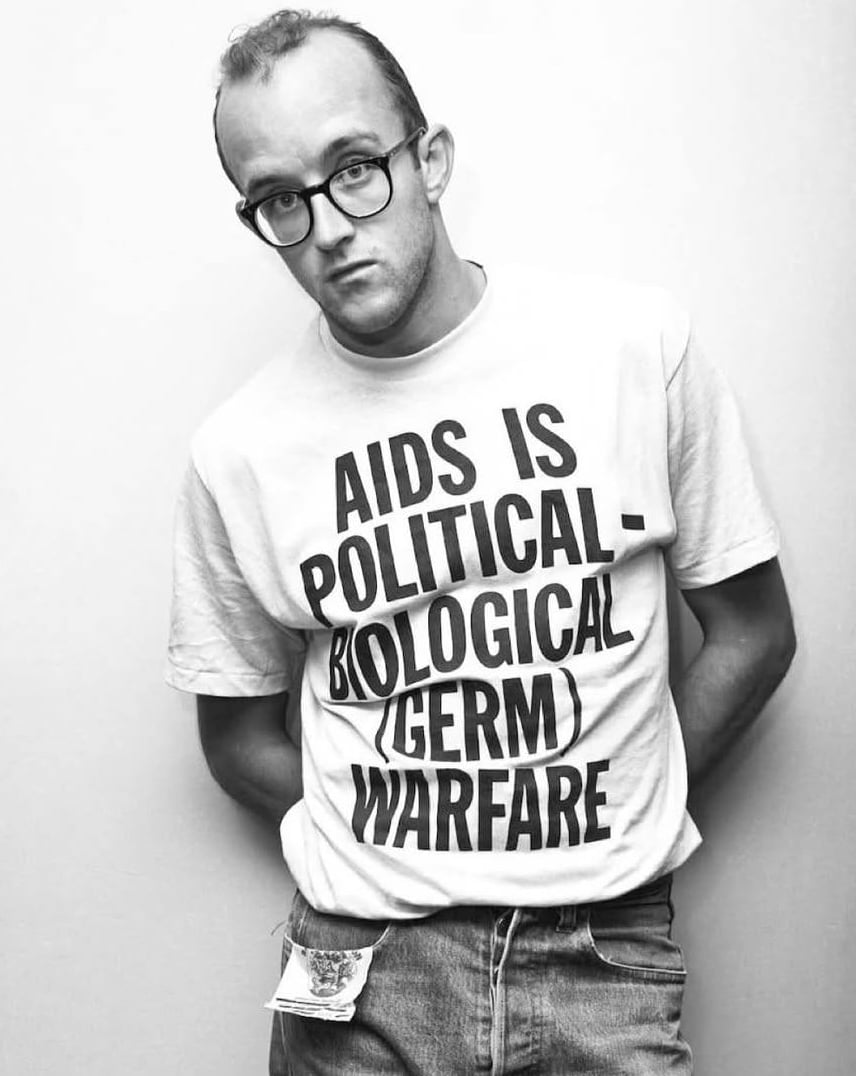
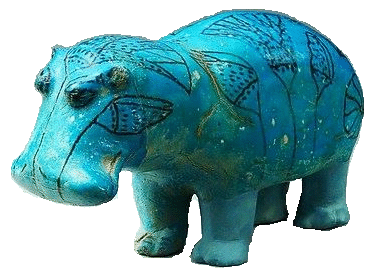
☆
 ☆
☆